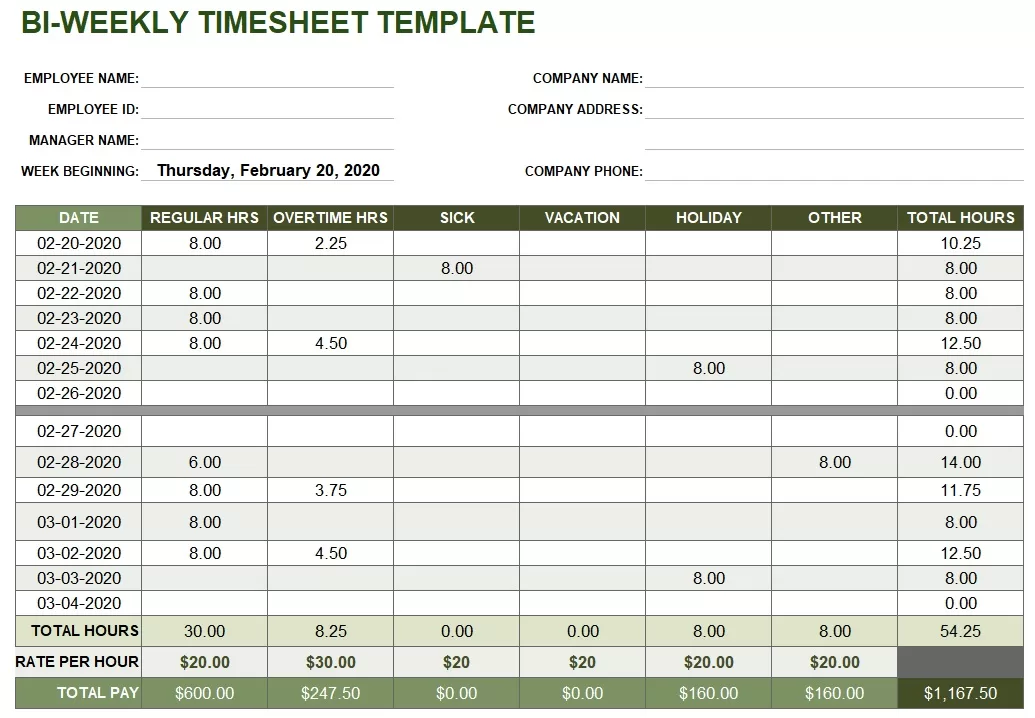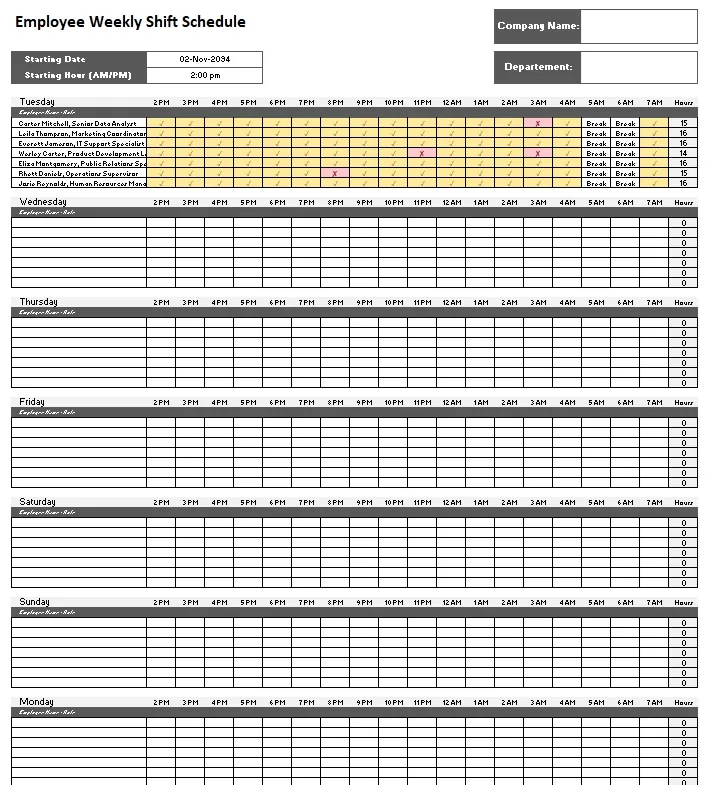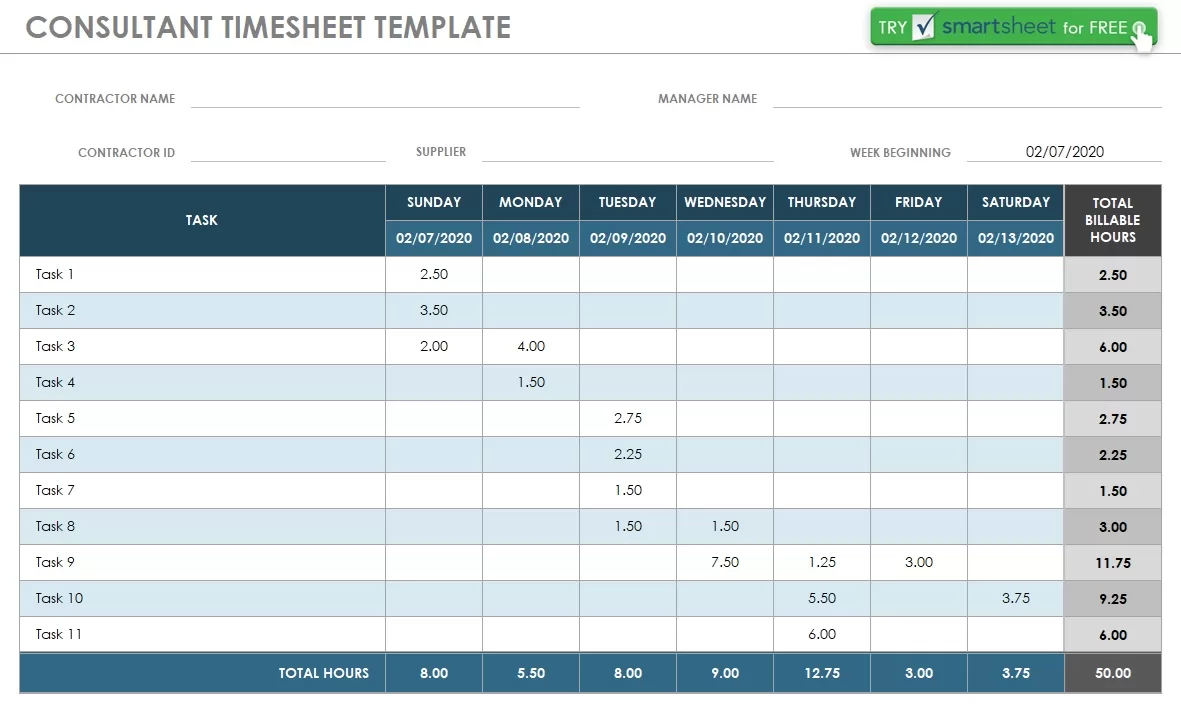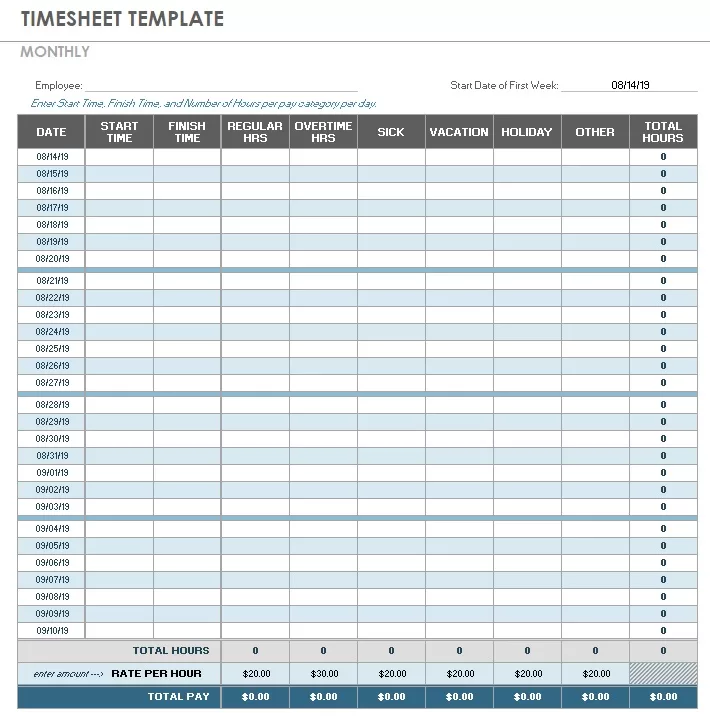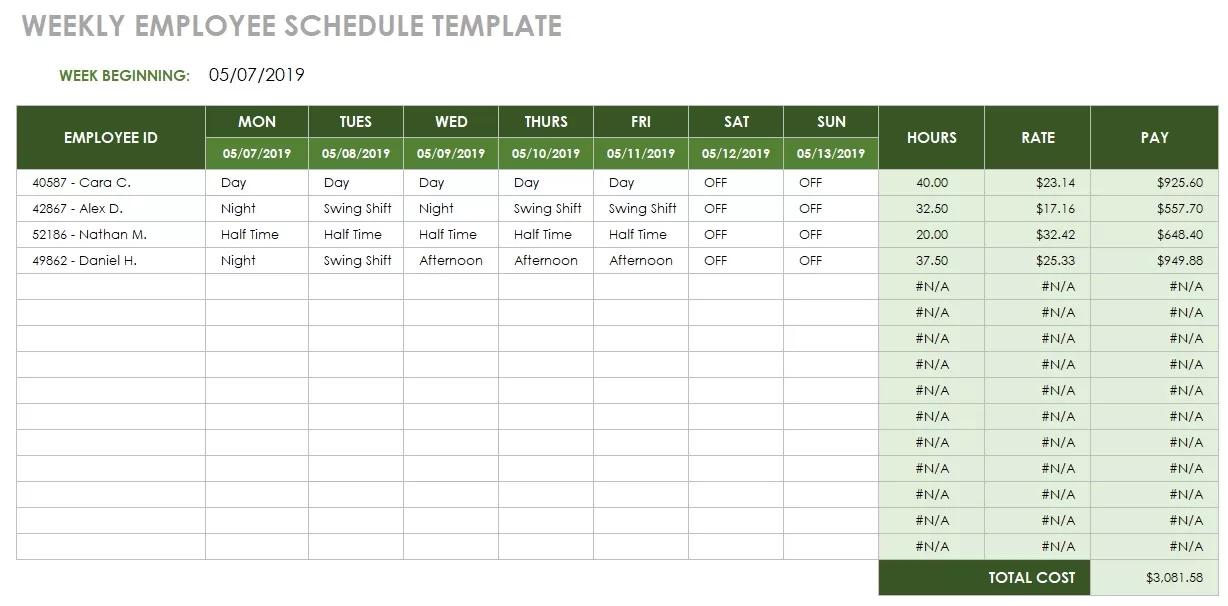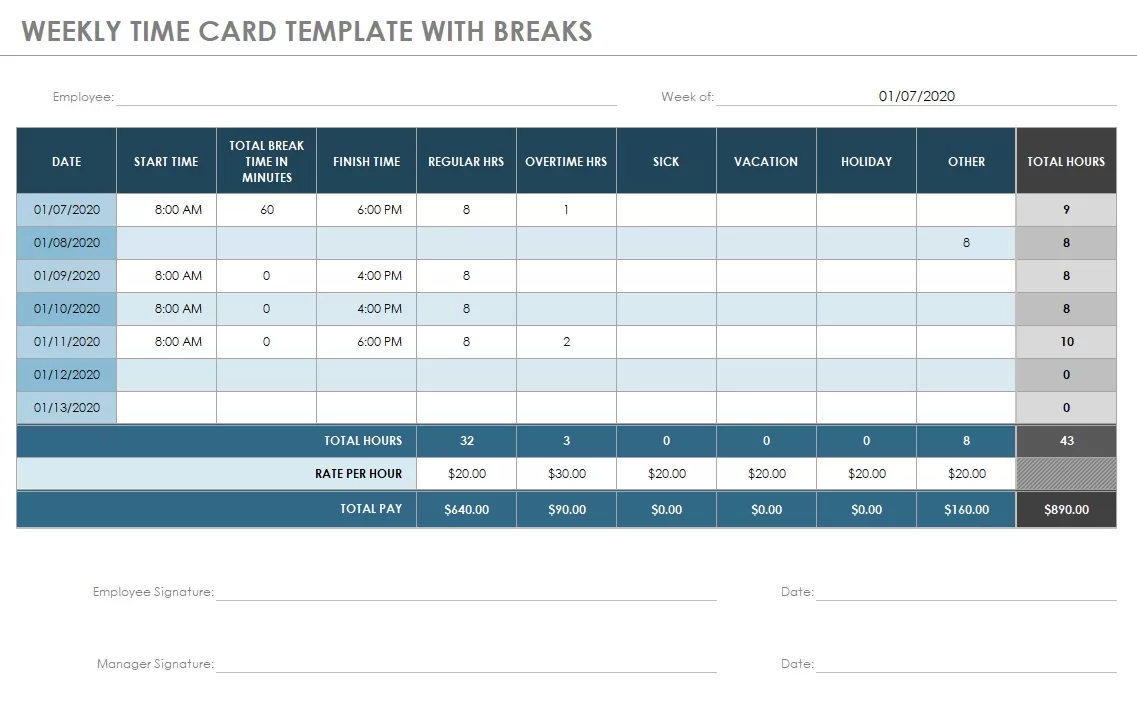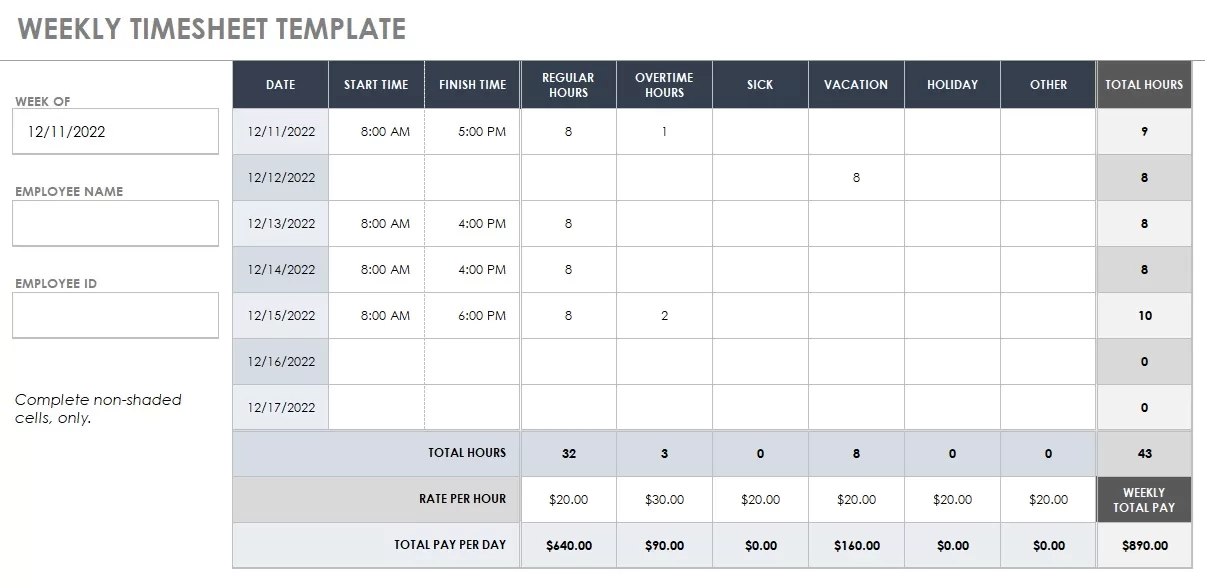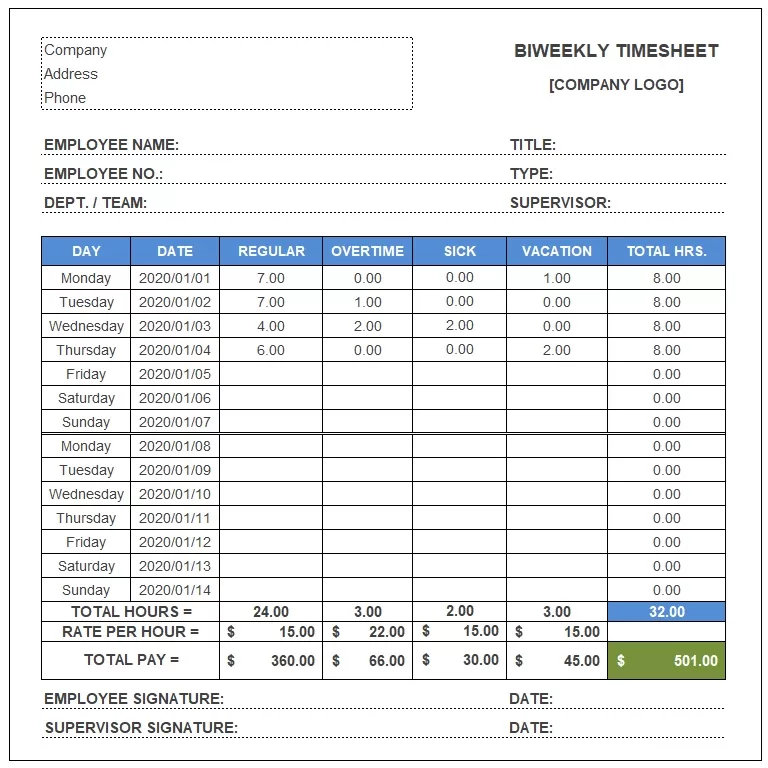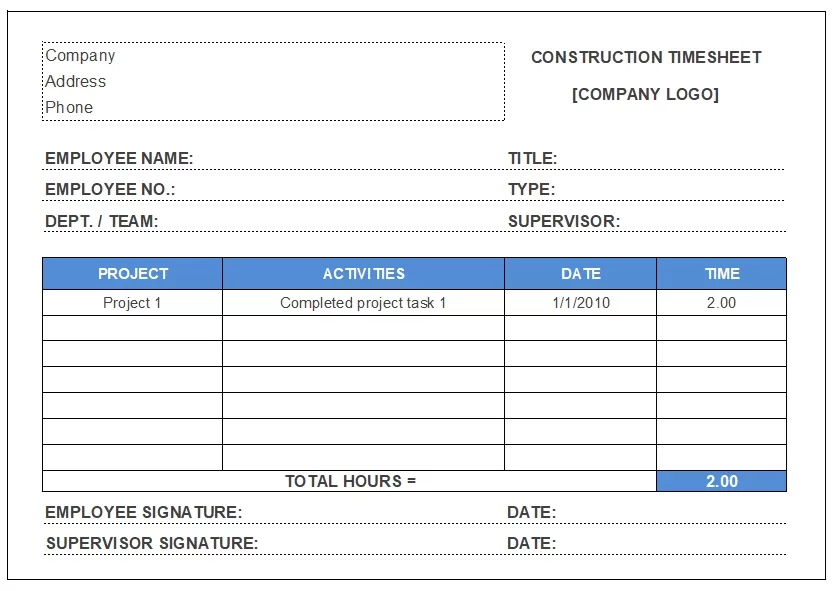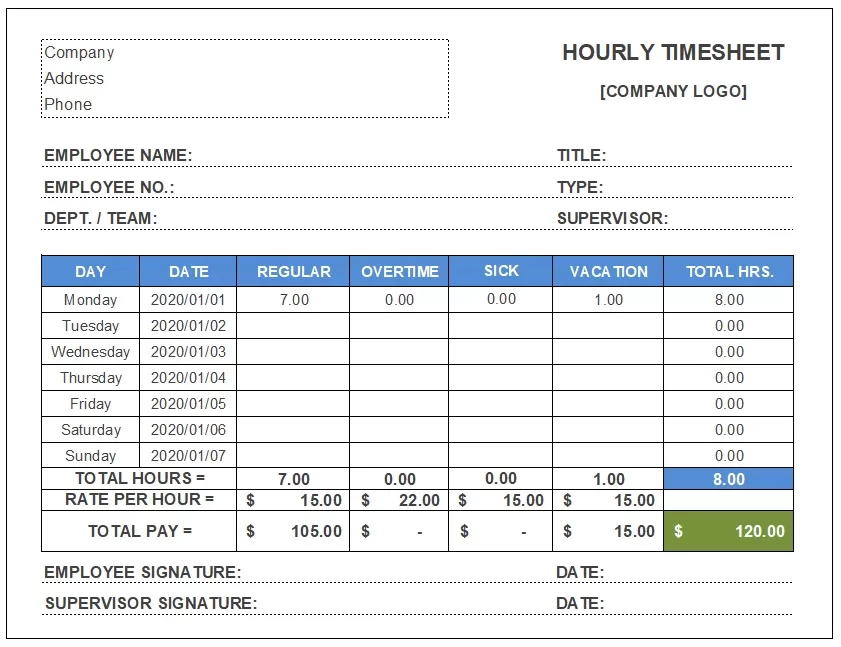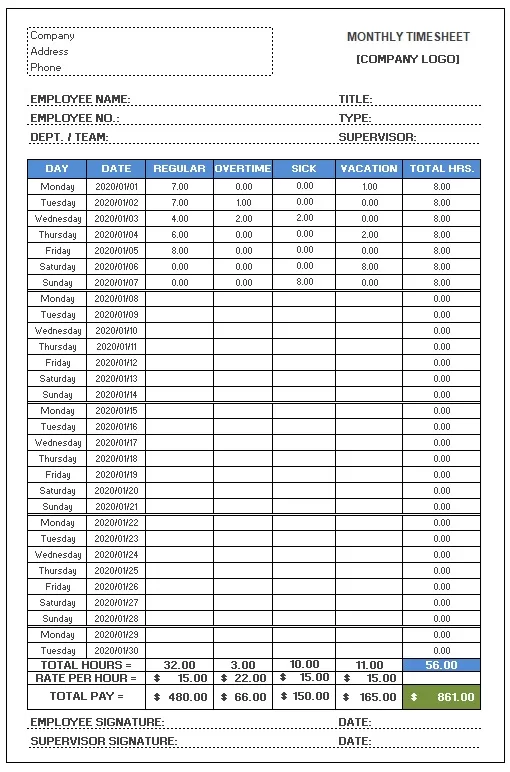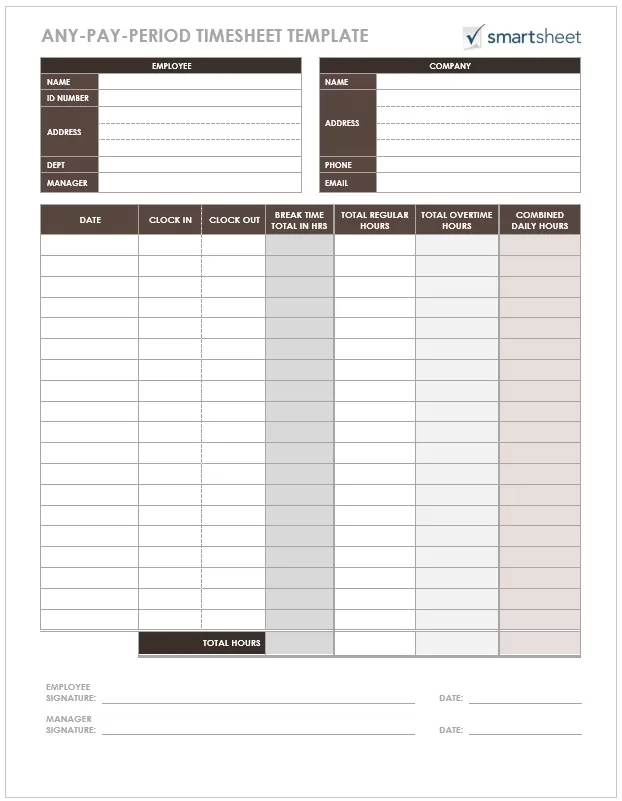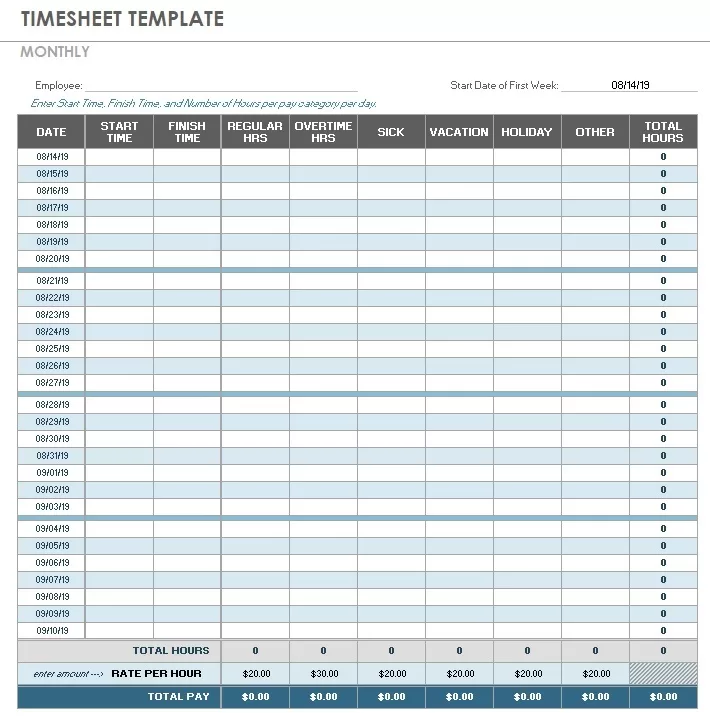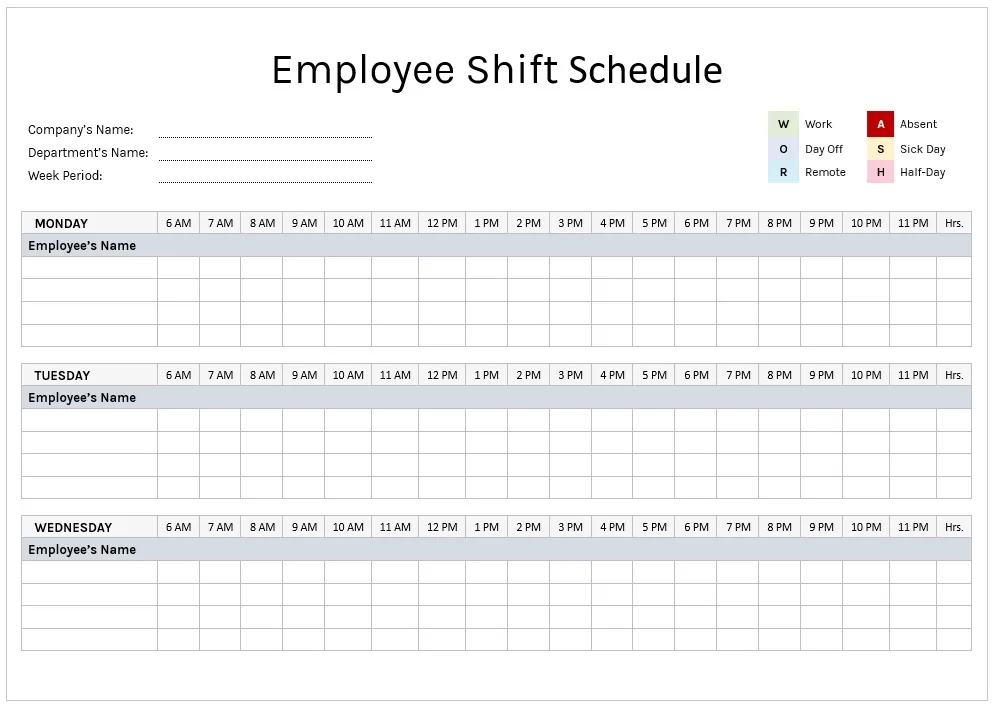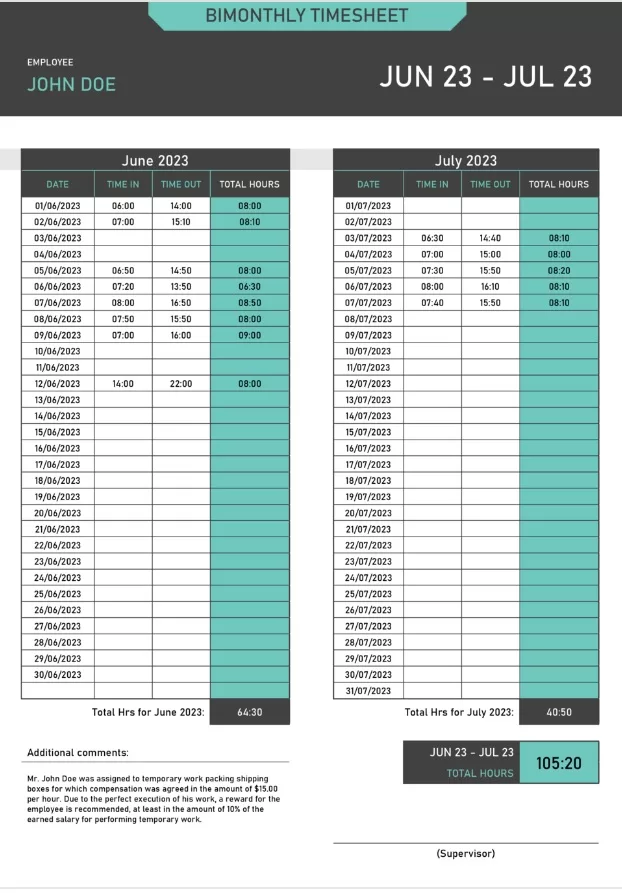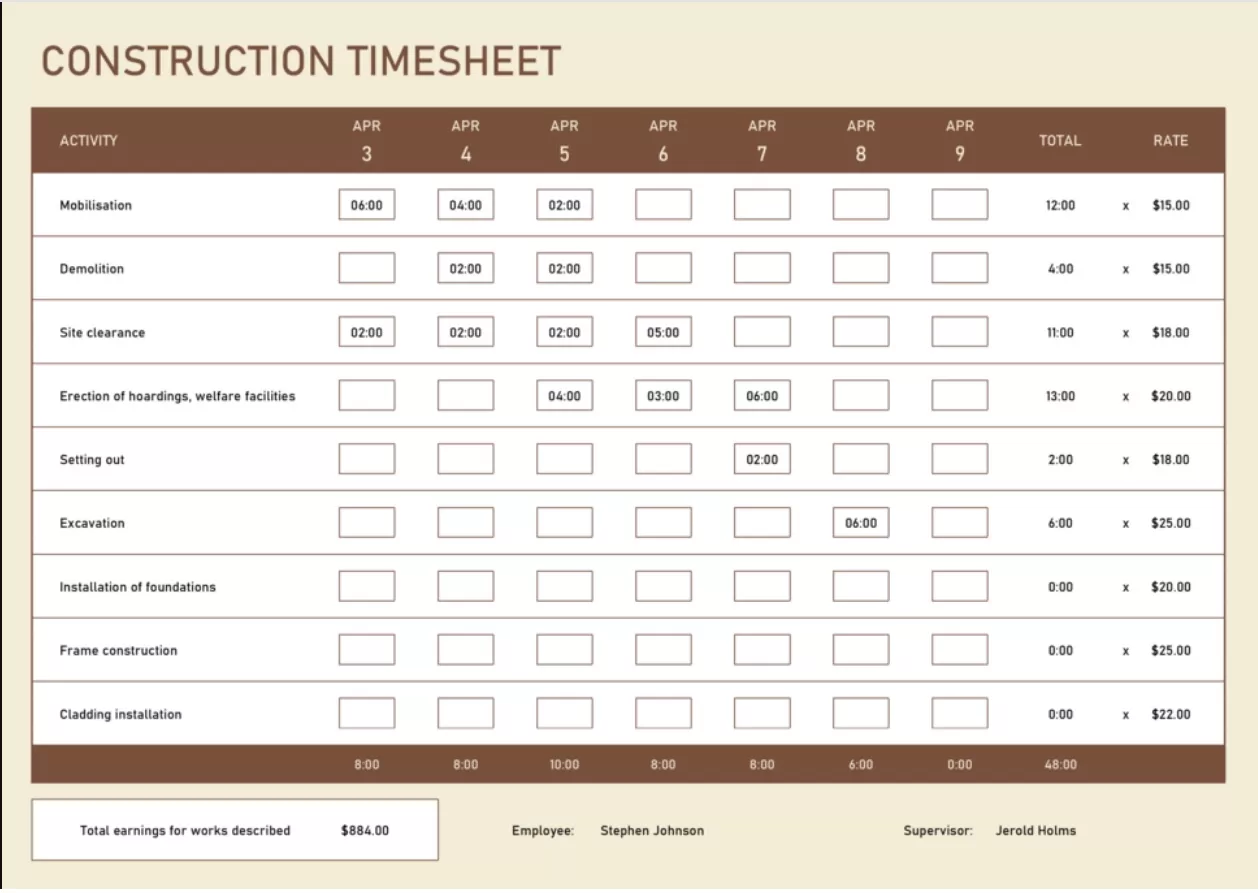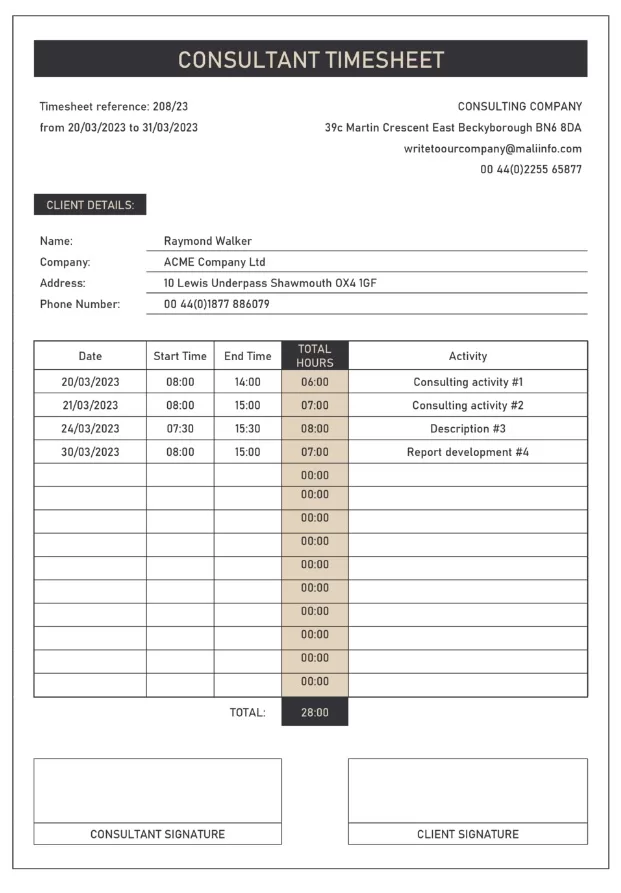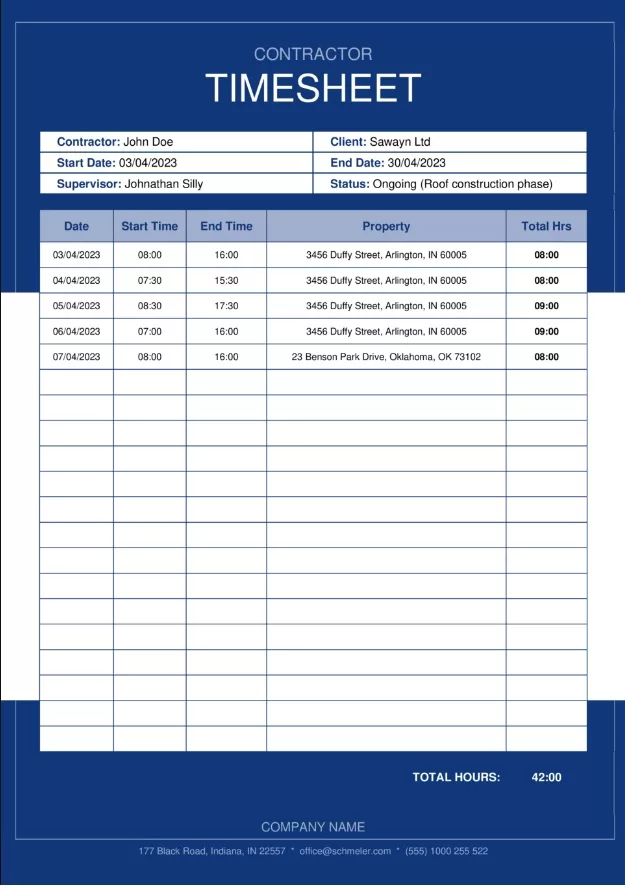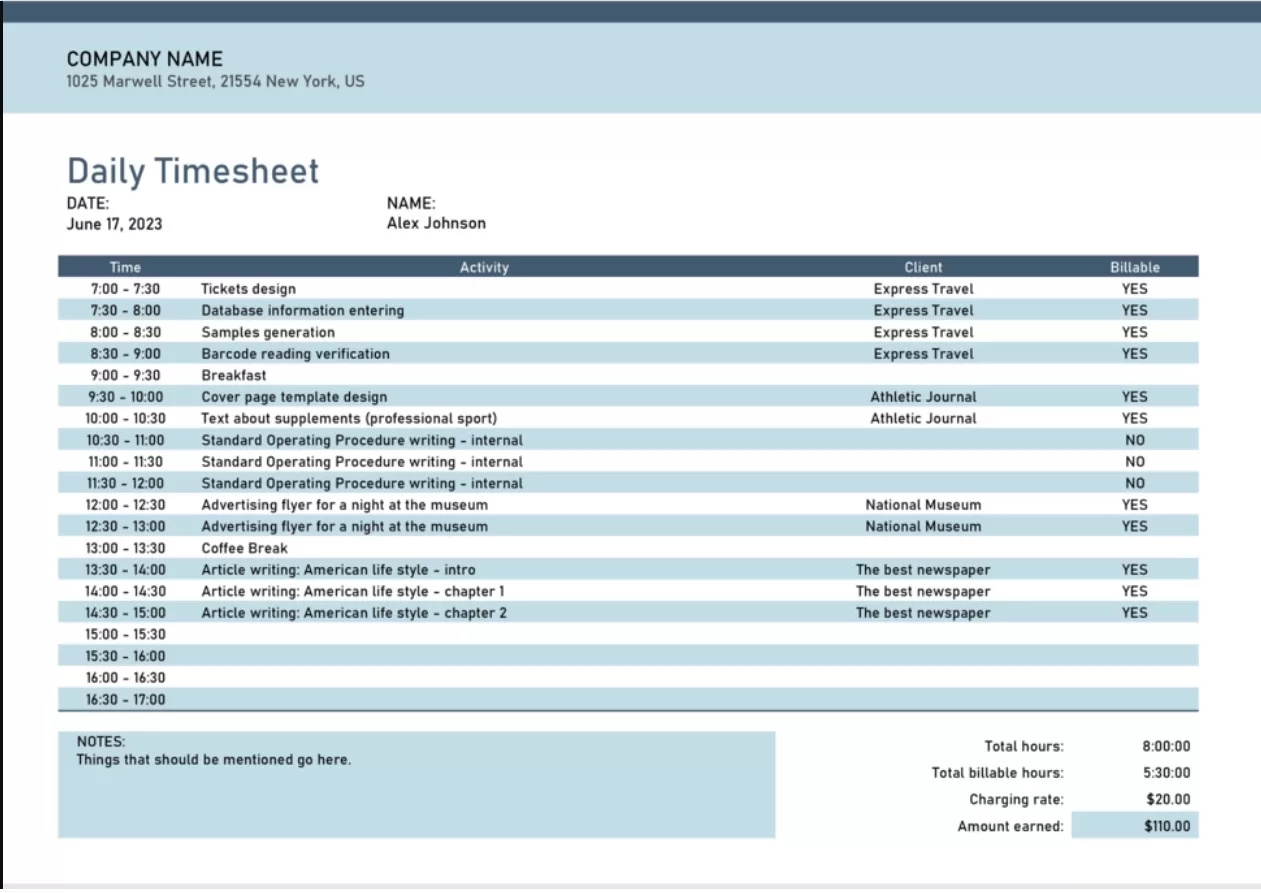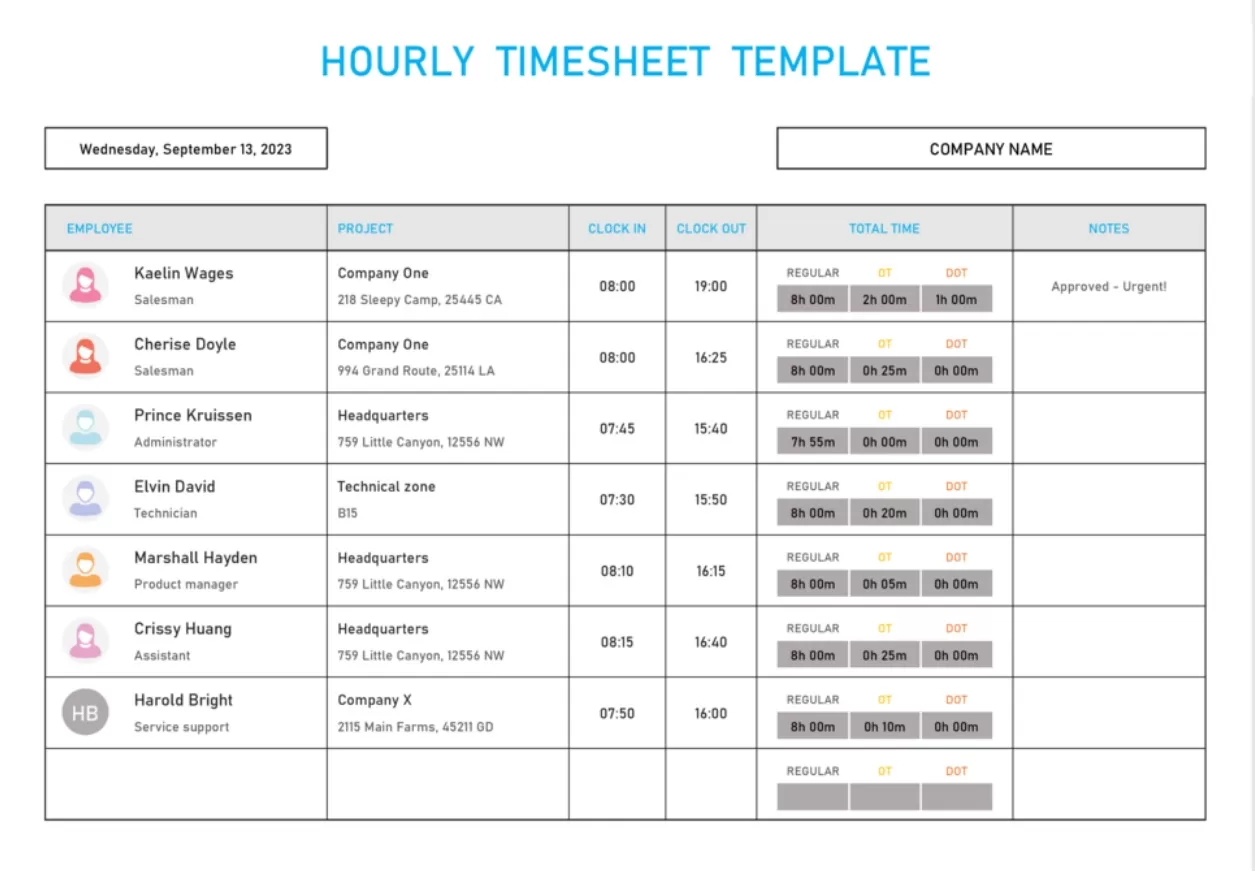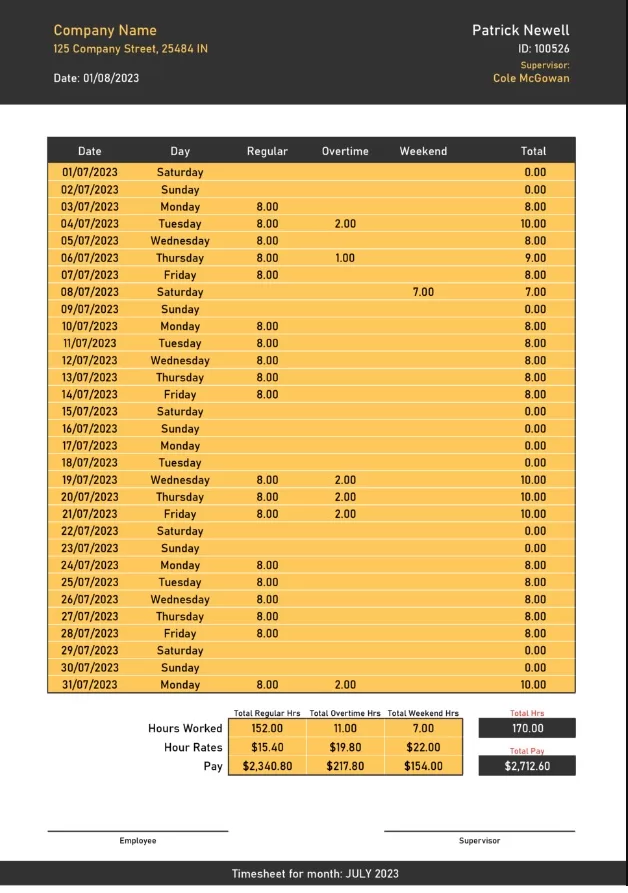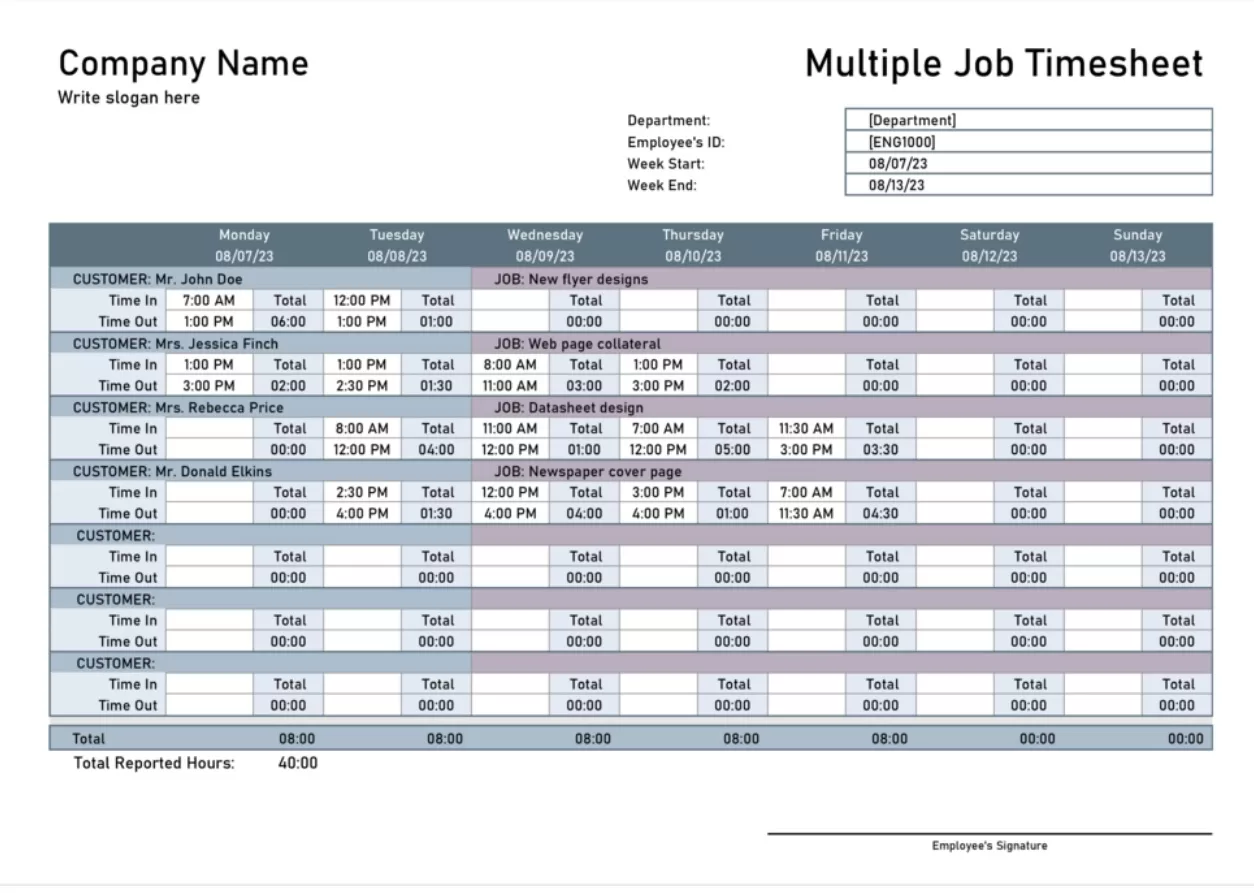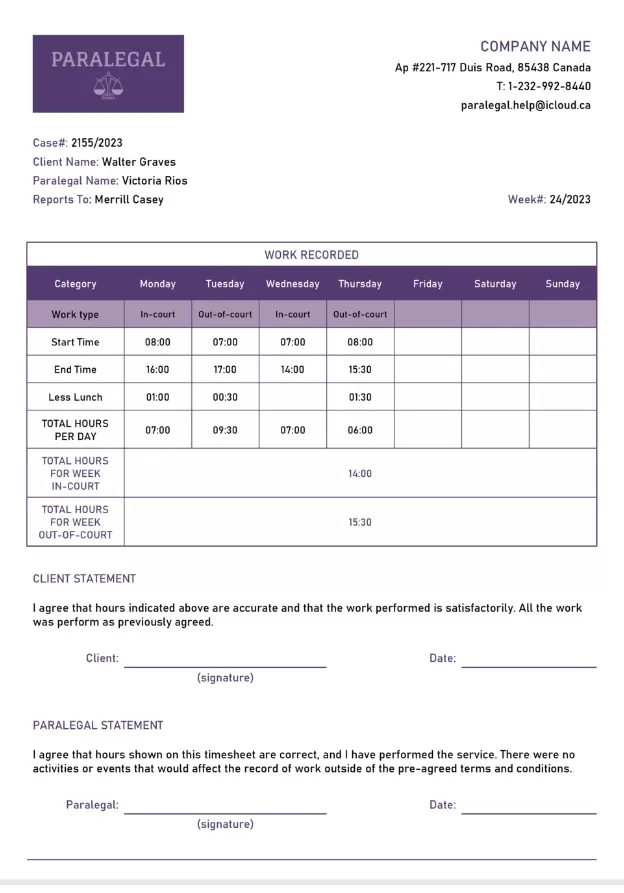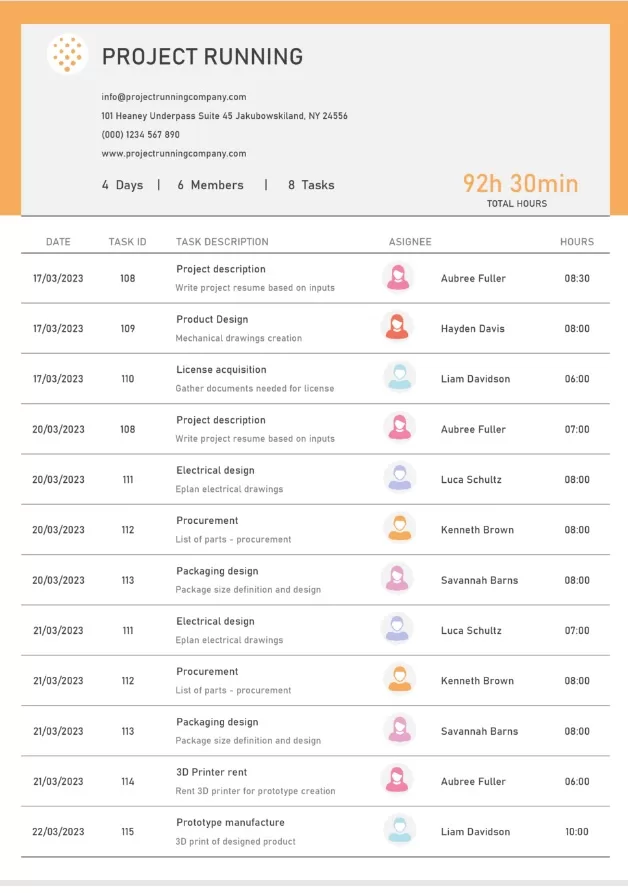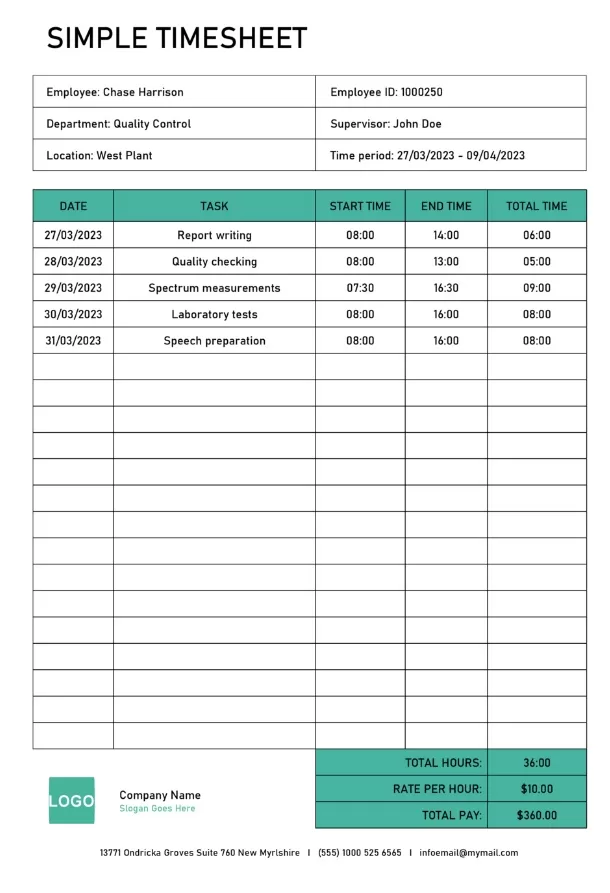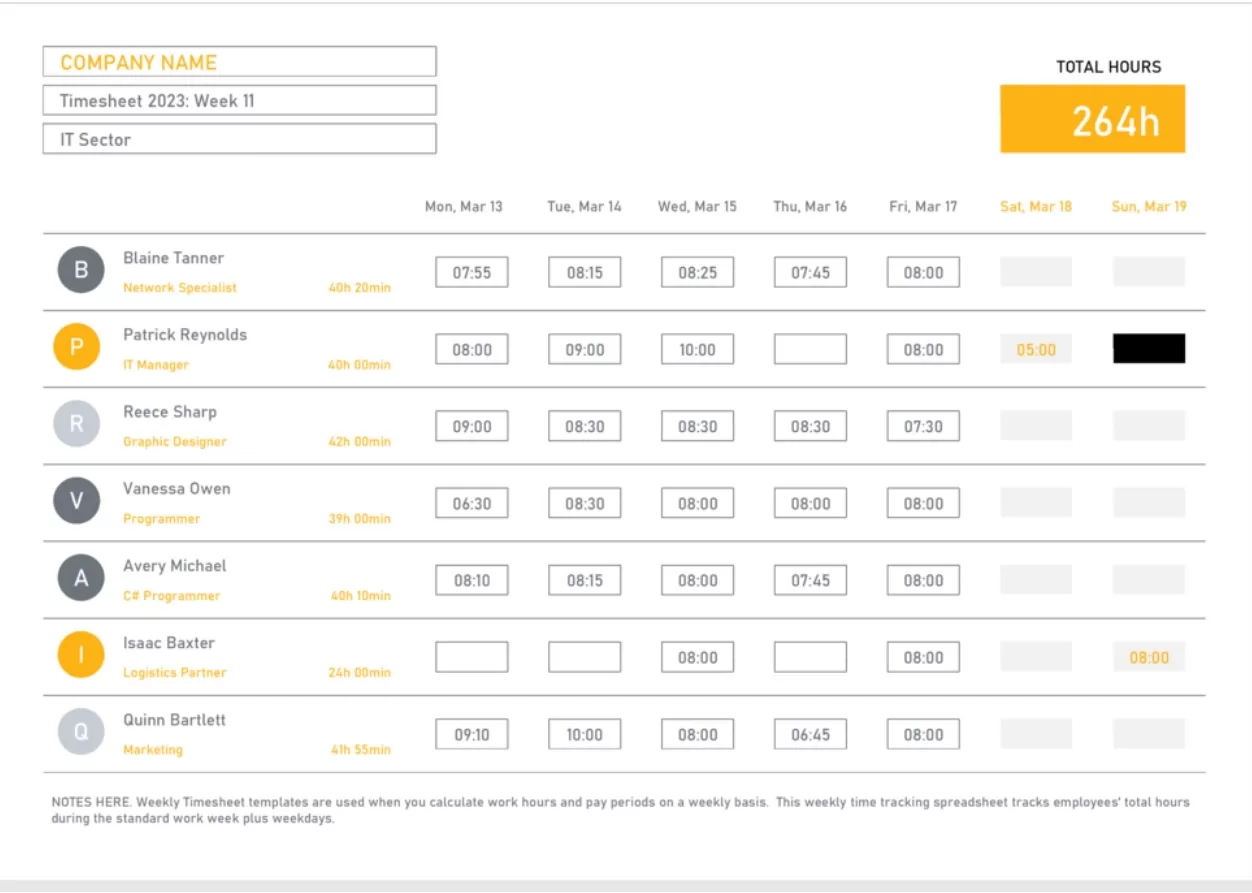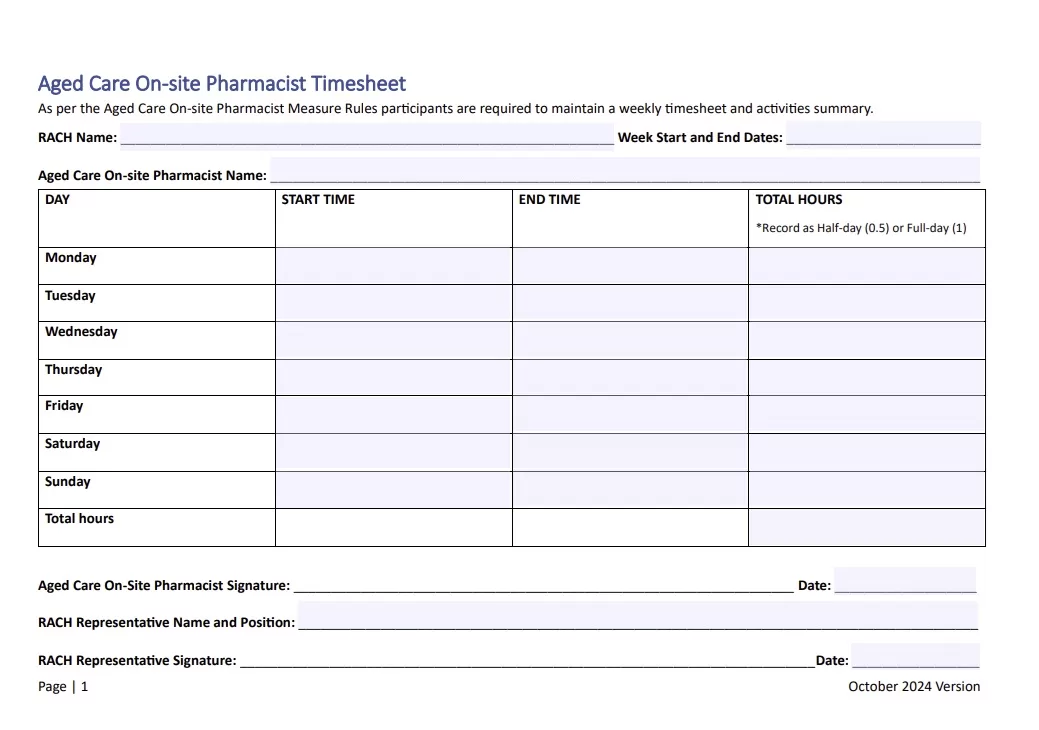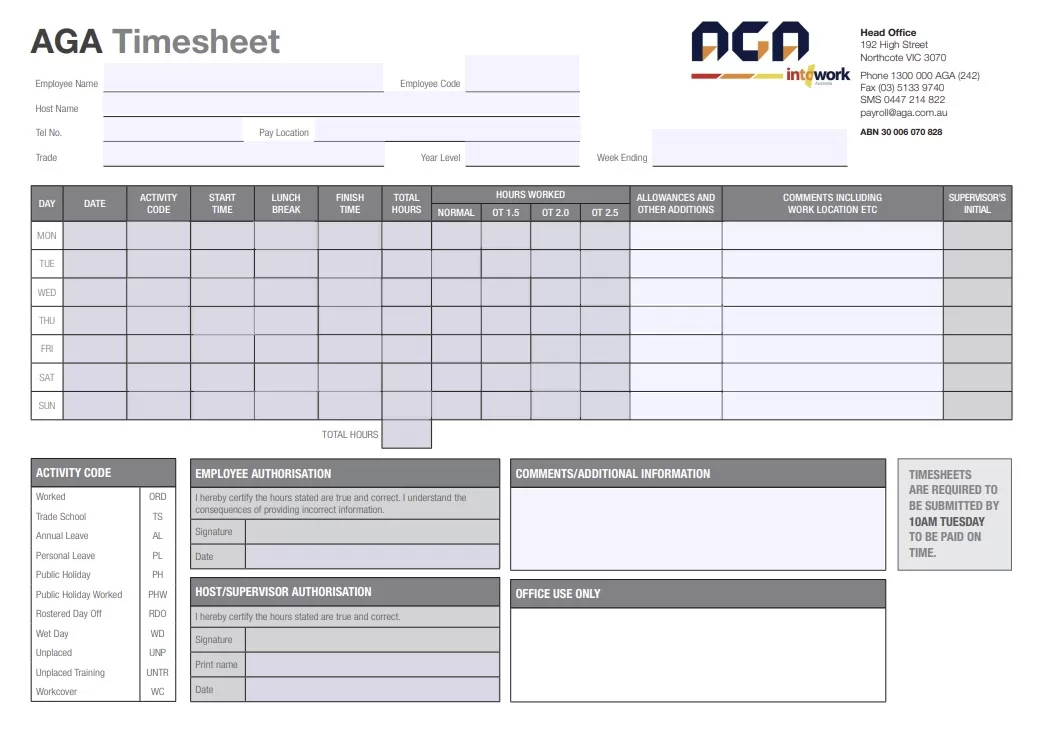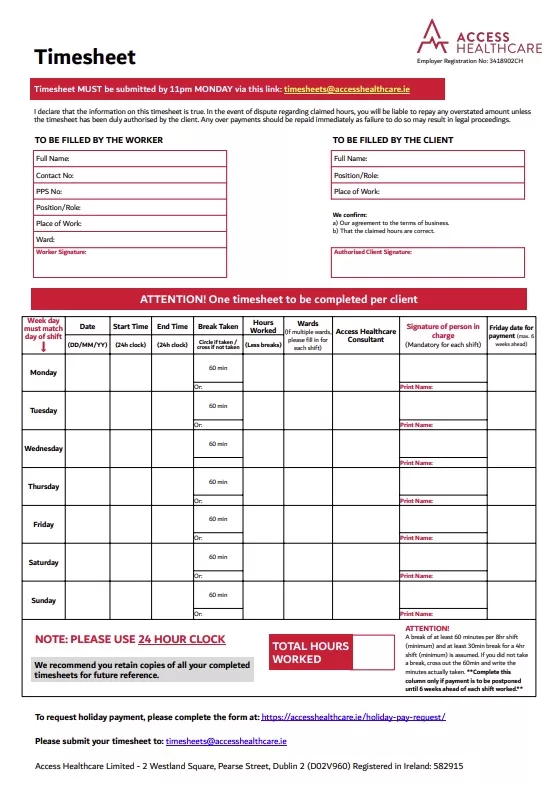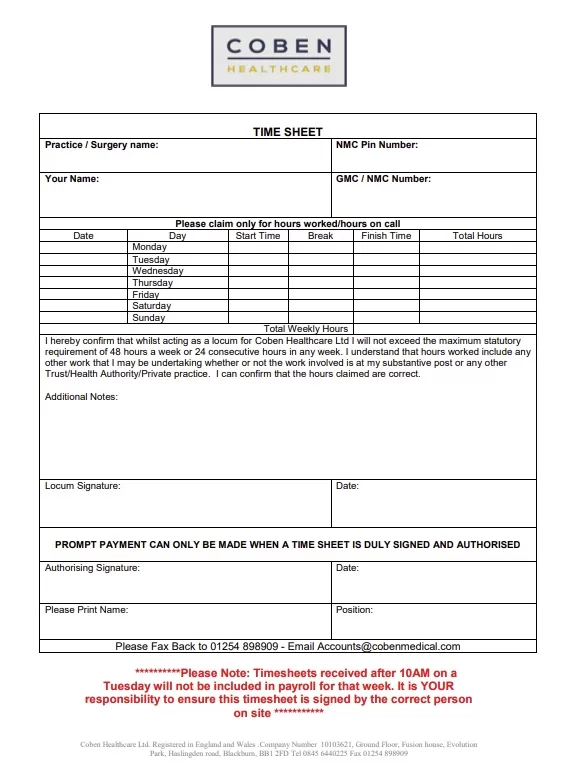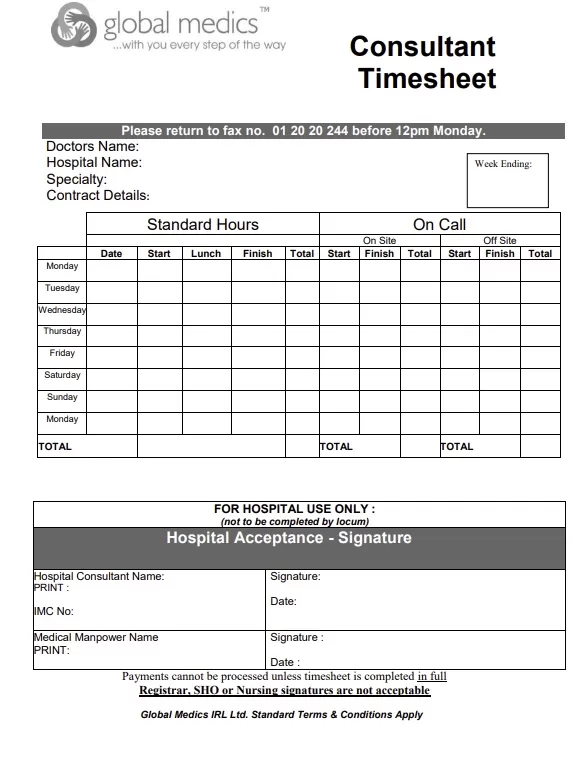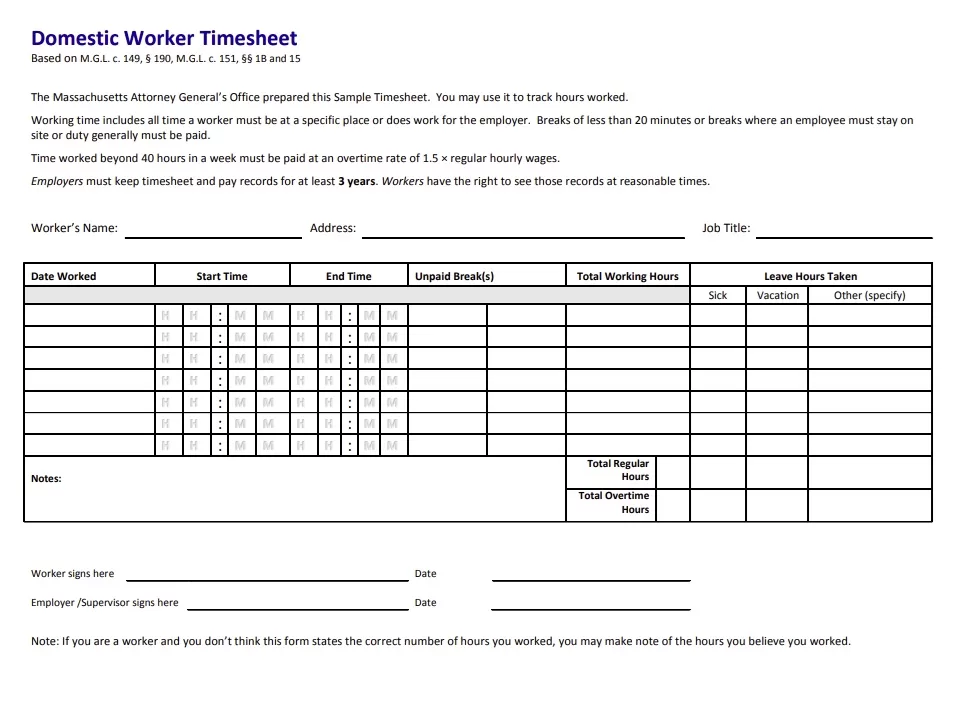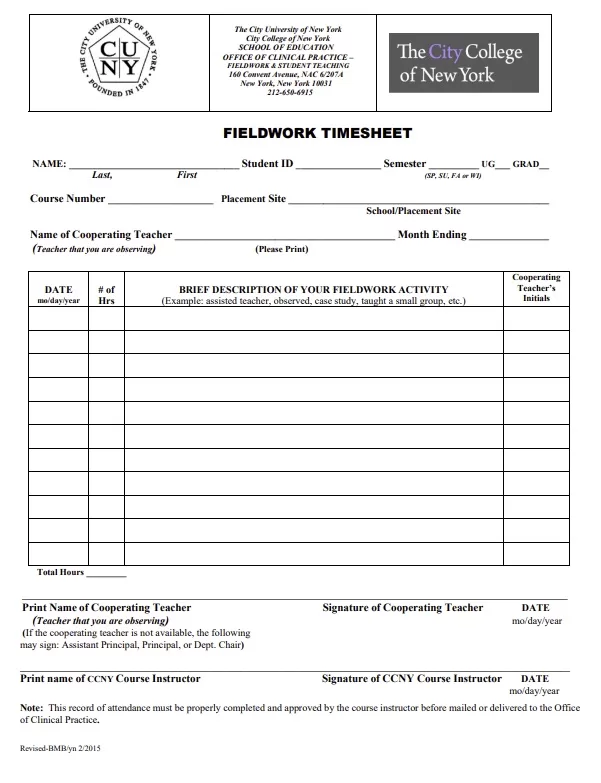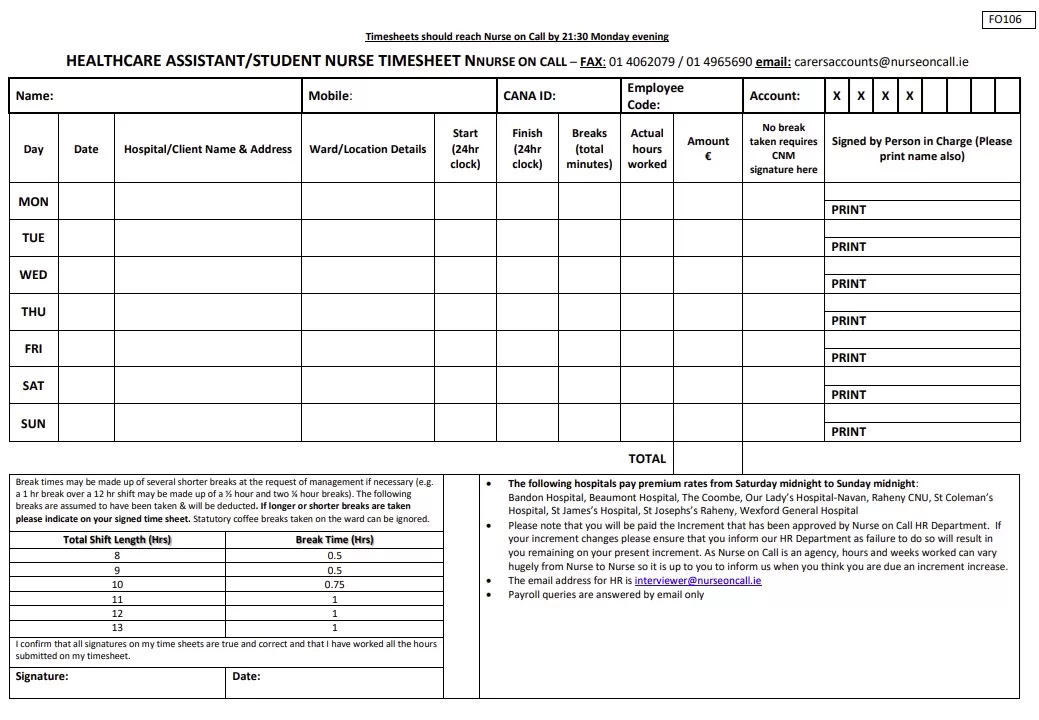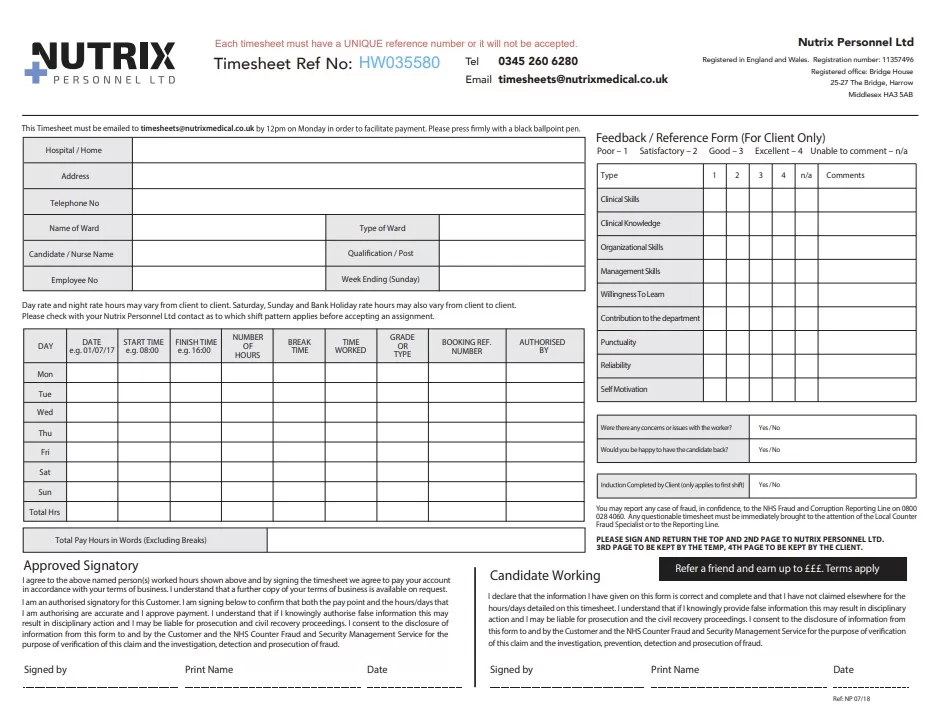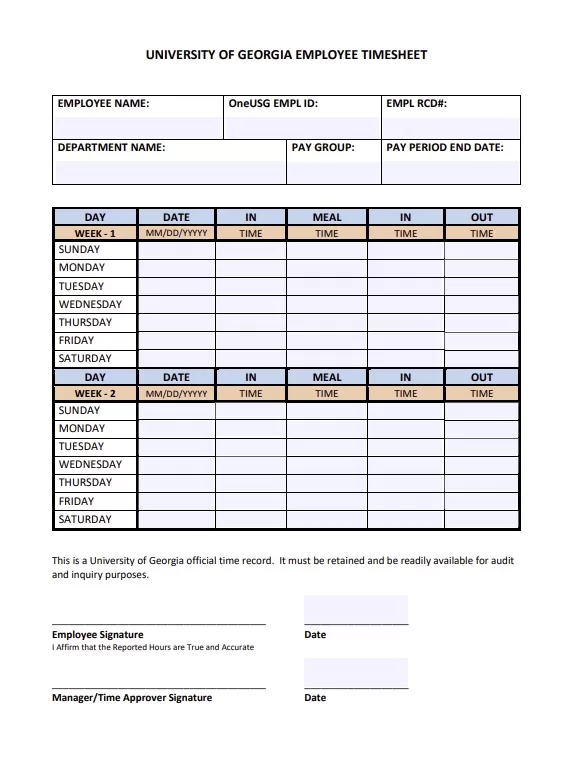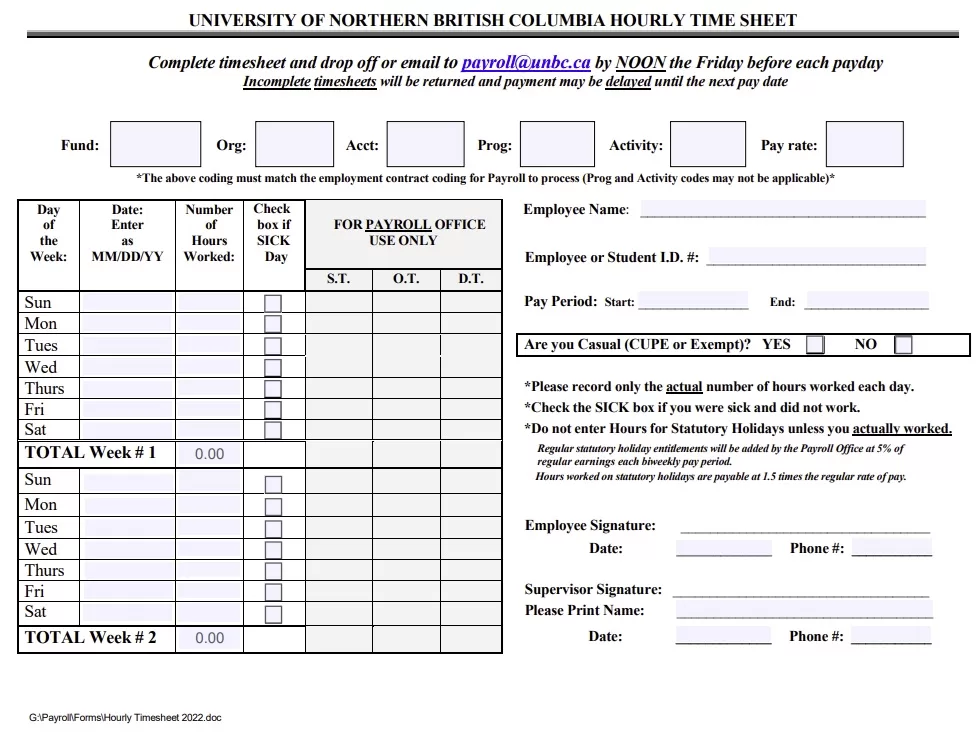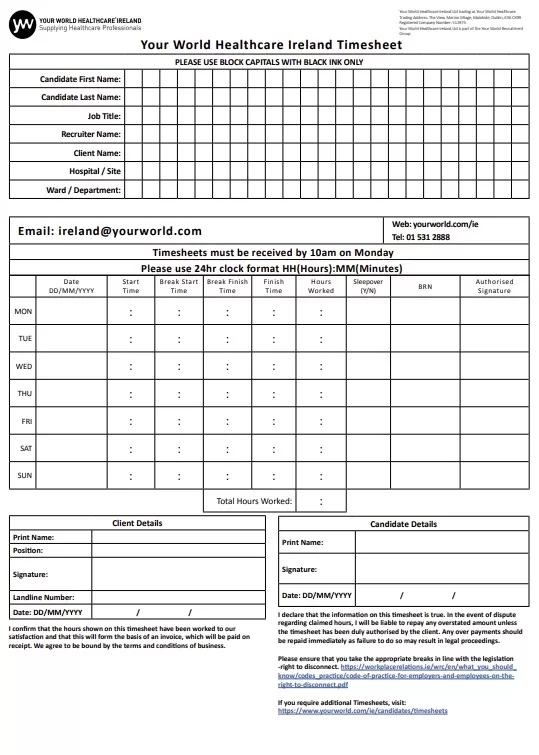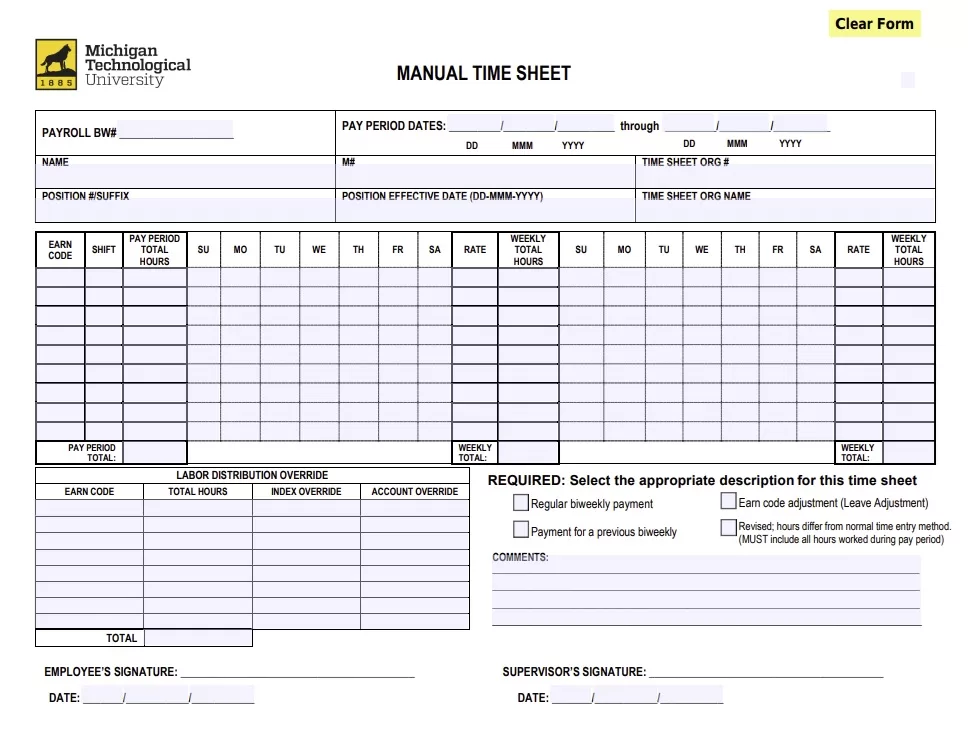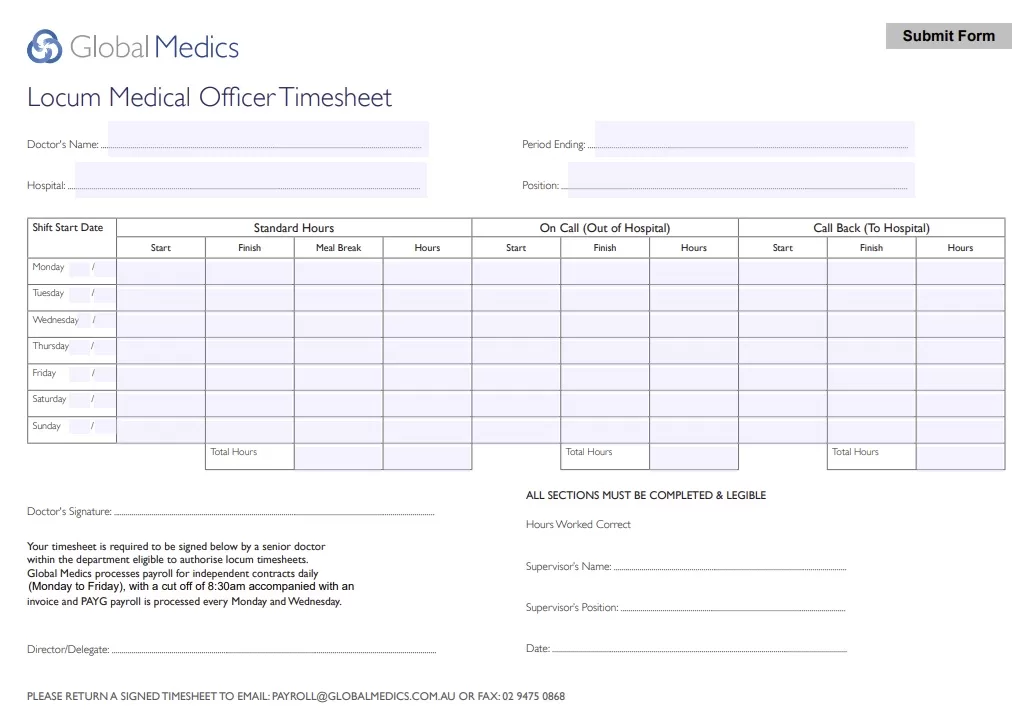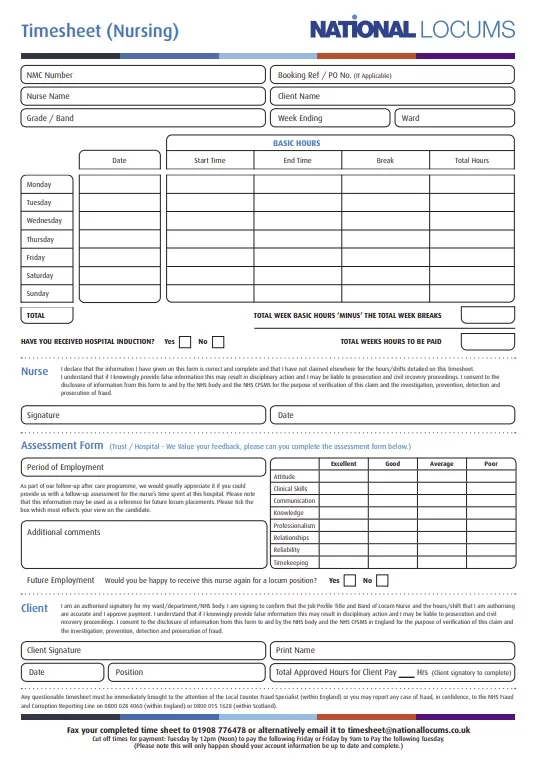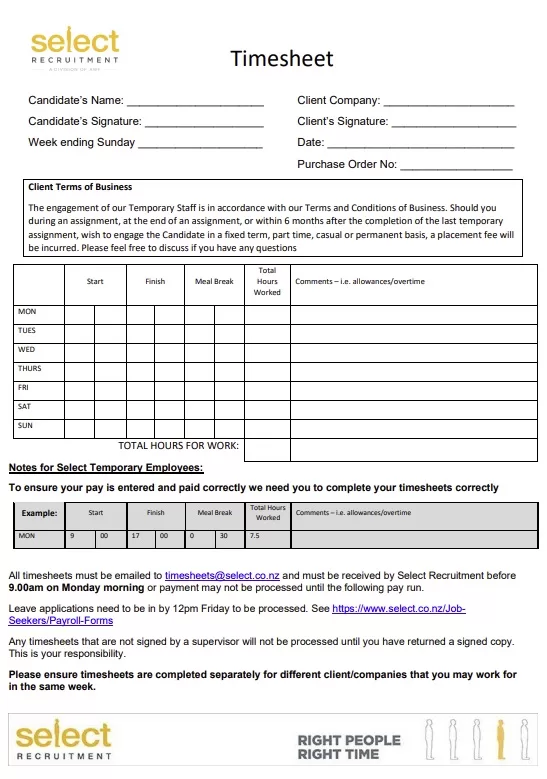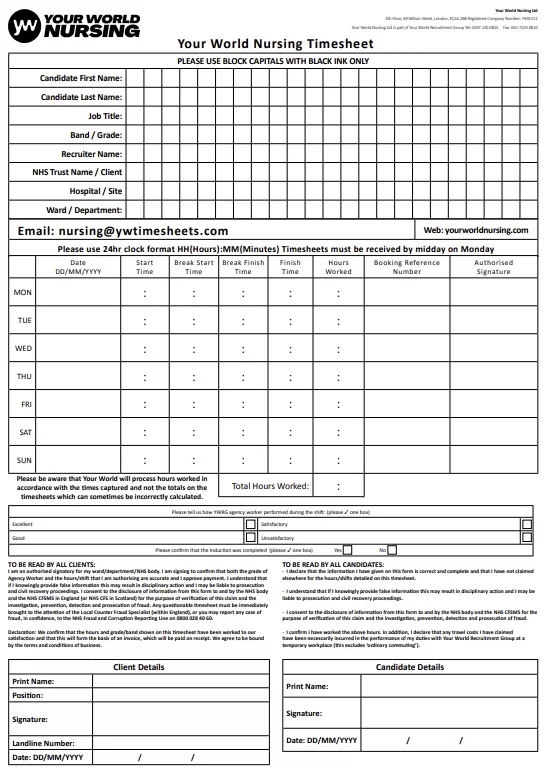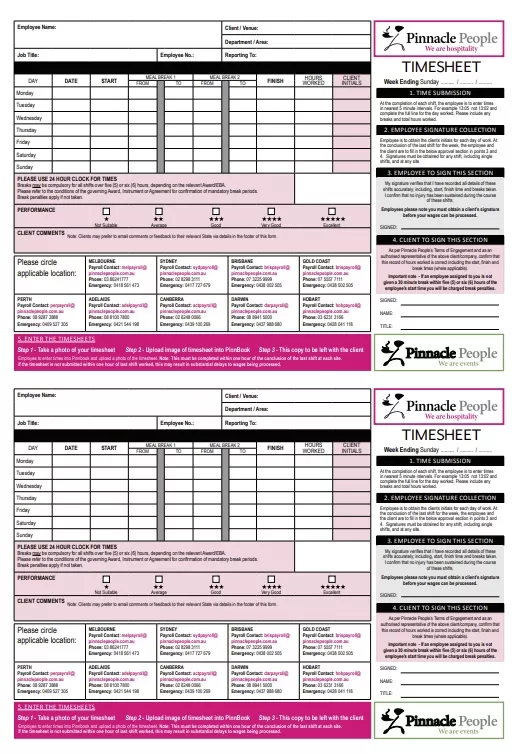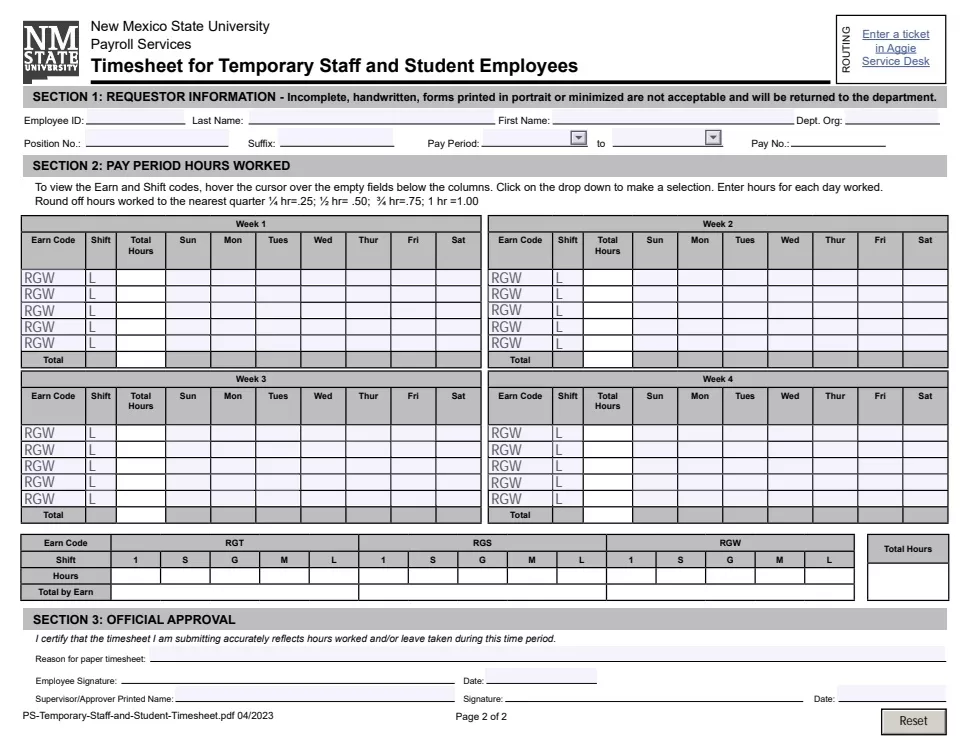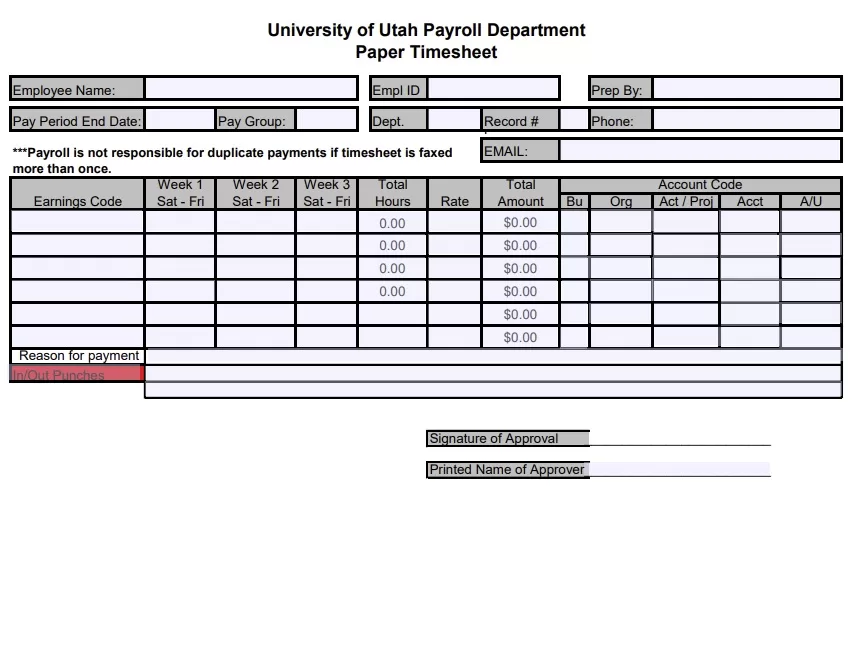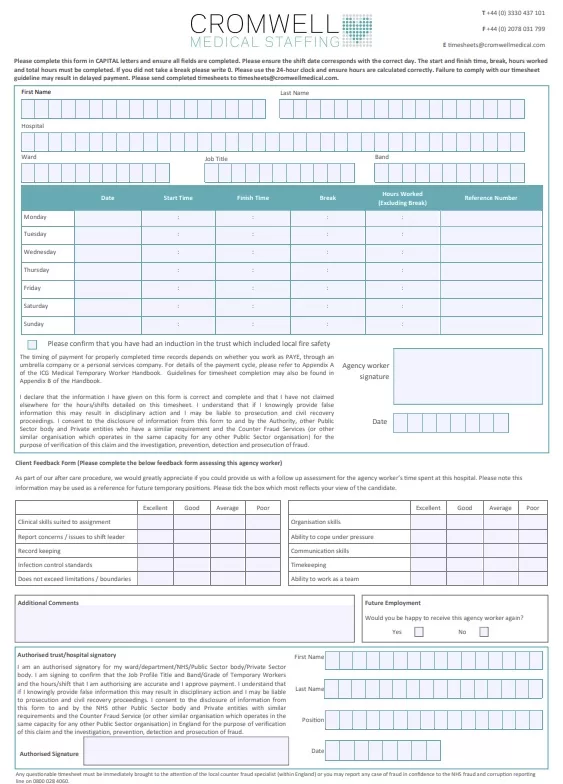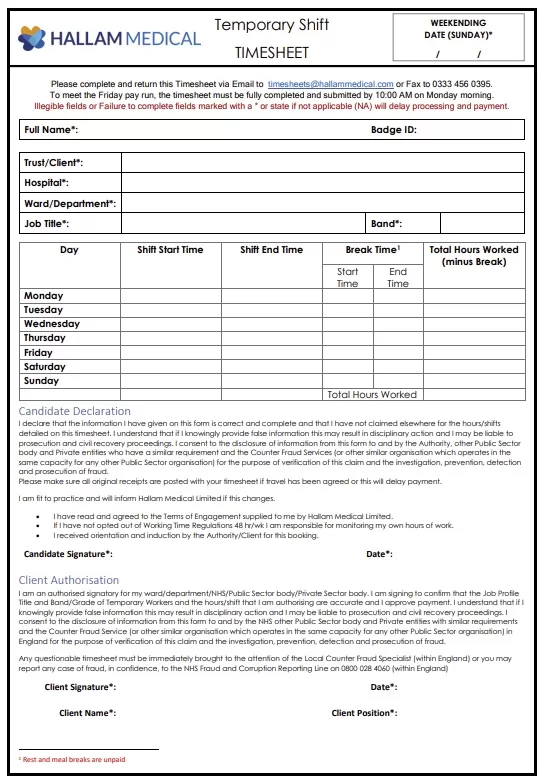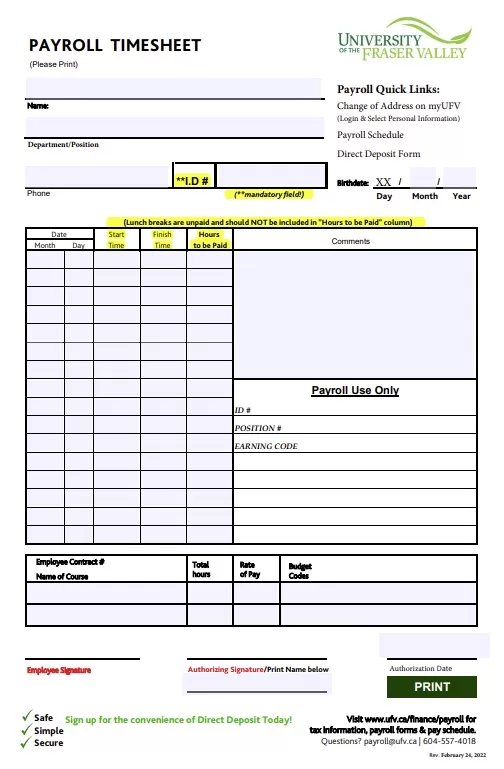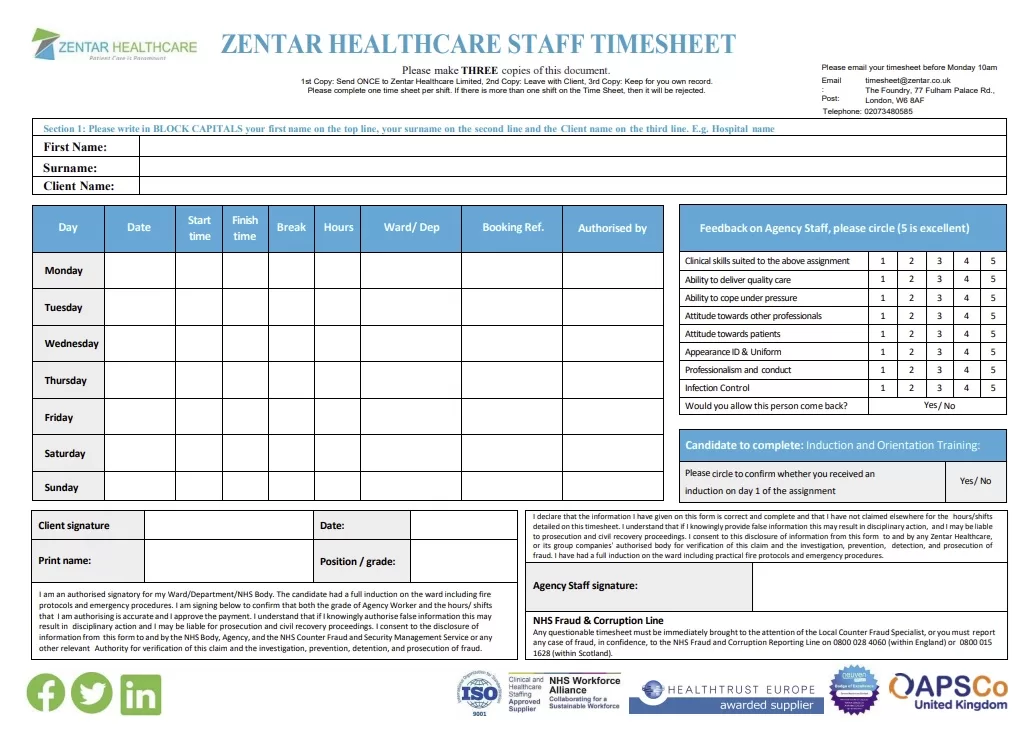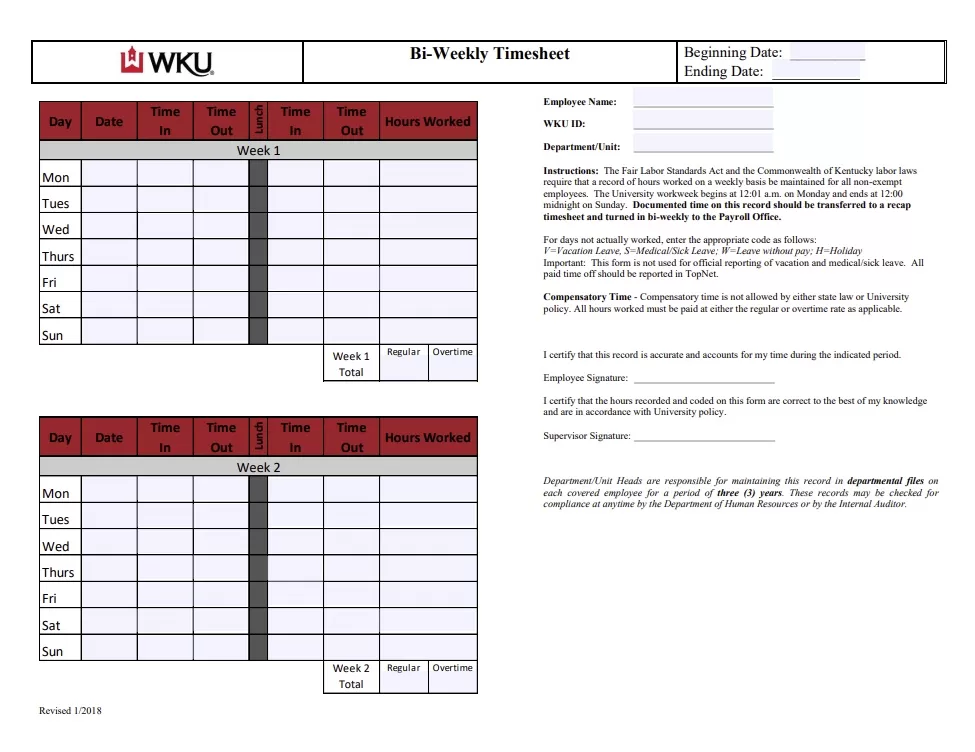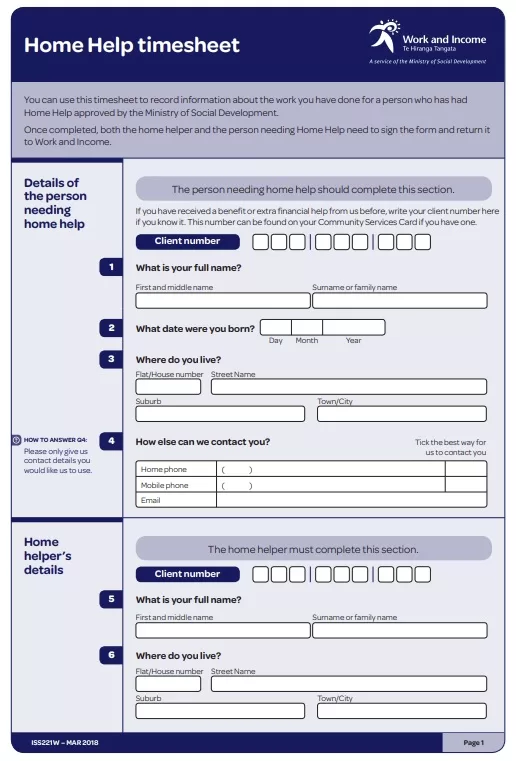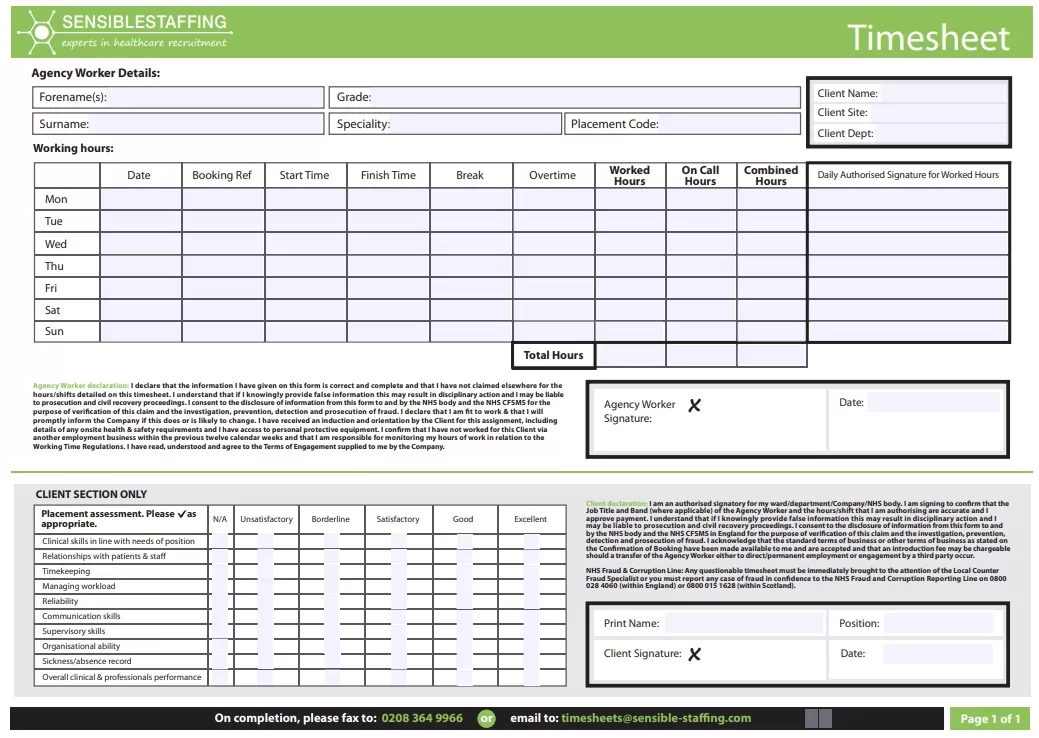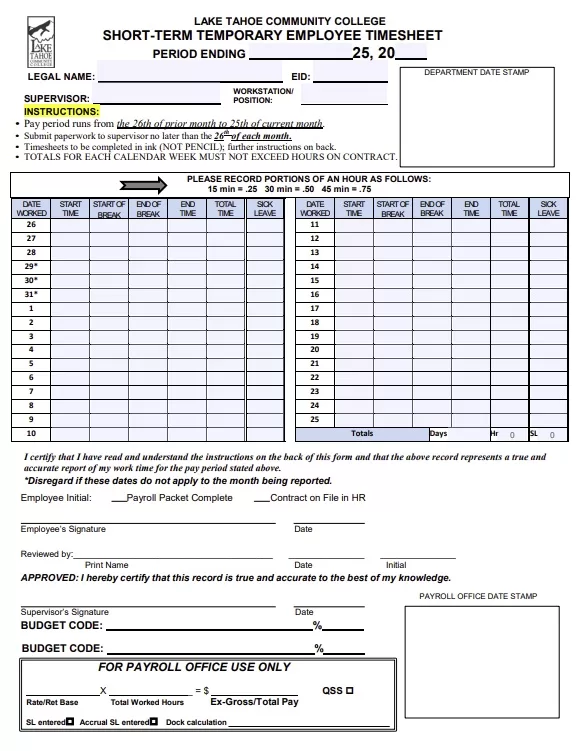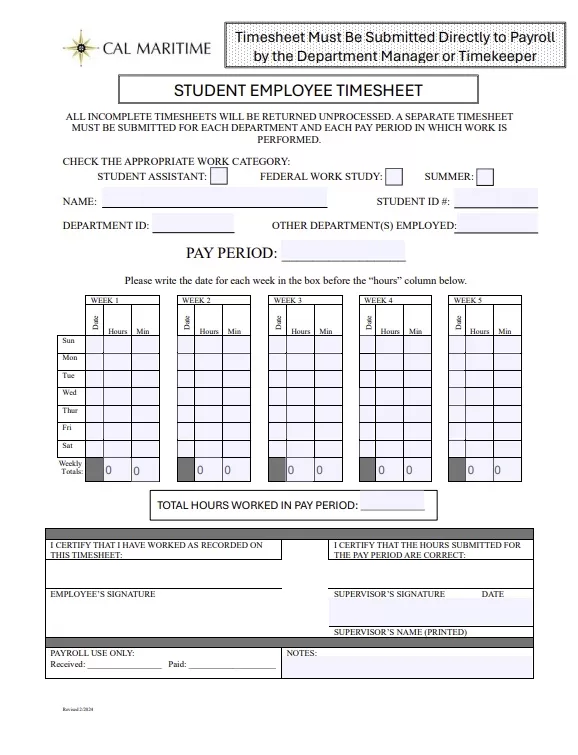A timesheet template is a useful tool for gauging the hours worked by an employee over some time. The template lays down a form to be filled with starting and ending workday times, the overall hours worked, breaks taken, and overtime, if applicable. Therefore, whether in small business or corporates or by freelancers, timesheet templates serve as a basis for guaranteeing accurate payroll, project billing, performance monitoring, and compliance with labor regulations. You can also explore our free Sign-in Sheet Templates and a Time Duration Calculator to help you manage time effectively.
Contents
- Understanding the Importance of Timesheets
- Key Components of an Effective Timesheet
- Free Timesheet Worksheets in MS Excel Format
- Types of Timesheets
- Free Timesheet Templates in MS Word Format
- Benefits of Using Timesheet Templates
- How to Choose the Right Timesheet Template?
- Free Printable Timesheets in PDF Format
- Customizing Timesheet Templates for Your Business
- Best Practices for Implementing Timesheet Systems
- Author
Understanding the Importance of Timesheets
To track working hours precisely, it is essential to ensure that employees are paid fairly and properly. Timesheets keep records of the employees’ time worked-and every minute is recorded and can be corroborated. For managers or HRI departments, an easy means of calculating payroll, budgeting, and improved clarity in managing the workforce is also instituting a means of eliminating disputes arising from the difference in pay and unapproved overtime.
How Timesheet Templates Streamline Time Tracking for Individuals and Businesses
The timesheet templates mean that there is typically no need to pin one format upon another each pay period. By having ready fields for hours, dates, tasks, and employee information, these templates allow for saving time and making sure that the data collection is being done consistently. They can be used either manually on paper or electronically through software platforms, spreadsheets, or online tools. Within a fast-paced and dynamic working environment, the availability of stats sheets ensures proper and quick entry onto these sheets to allow the proper review by organizations to ensure the accurate accounting of the worked hours in project-wise, department-wise, or client-wise categorization. This uniformity promotes productivity, ease of processing payments, and auditable proof of hours worked by employees.
Key Components of an Effective Timesheet
Getting in place a well-done timesheet template is highly essential to keep a proper record of employee depredations and thereby help the smooth processing of payroll. Timesheets can therefore be seen as a standardized tool requiring every little piece of information to be duly recorded, thereby reducing the risk of errors, miscalculations, and malpractices. The efficiency of a timesheet mostly depends on the specification of data fields and their clearness.
Essential Elements to Include
The most basic fields required for effective time tracking constitute a good timesheet template. They comprise the employee’s name, job title, department, and ID number for proper assignment. Each entry on the timesheet must clearly mention the date work was performed, including the precise clock-in and clock-out time of the employee. To this end, the timesheet must also have fields for unpaid and paid breaks for accurate calculation of productive time. Some templates even track compensated overtime separately, which is essential for compliance with labor laws and compensation administration. In situations in which employees work on multiple projects or clients, placing extensive fields for project code or task description is warranted. The rationale for including information beyond what is needed for client billing or project costing is that it allows organizations to analyze how time is being consumed in a more sophisticated way.
The Significance of Accuracy and Clarity in Timesheet
A timesheet is useful when it is designed for the maximum ease of its audience-whether employees filling in their first timesheet or managers processing entries. Labels must be clear, logical grouping of information must be visible, and space for approvals and comments must also be marked so that all of these help enter another level in user confirmation. Ultimately, an accurate and well-structured timesheet template holds the workforce accountable, promotes effective payroll systems, and substantiates dependable time tracking all around the business.
Free Timesheet Worksheets in MS Excel Format
Here are previews and download links for these templates,
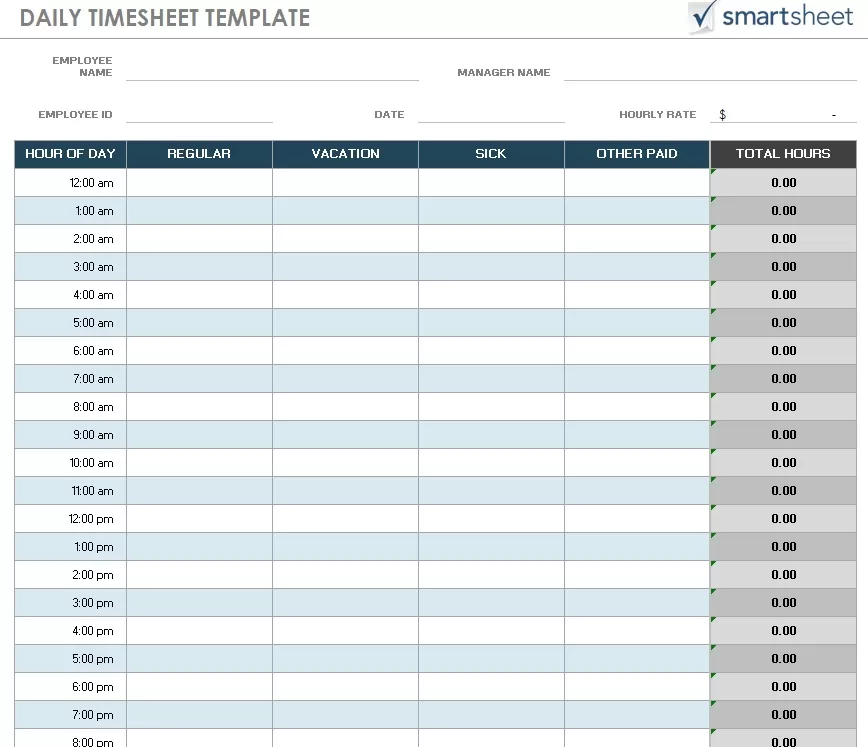
IC Largest Timecard Collection Daily Timesheet Template
File Type: MS Excel
File Size: 746 KB
Types of Timesheets
All timesheet templates are available in different formats to satisfy various organizational needs and industry requirements. Selecting the appropriate type of timesheet template ensures correct time tracking, easy payroll processing, and meets the unique scheduling patterns of a workforce. The choice of template often depends upon how often employees report their hours, the complexity of the roles they perform, and the operational practices of the business.
Daily, Weekly, Bi-Weekly, and Monthly Timesheets
Templates for daily timesheets are ideal in situations where employees have variable hours or are paid on a daily assignment basis. They provide detailed information about timelines for each working day and work well for jobs that need accountability on a daily basis. Weekly and bi-weekly are favored in a more or less stable schedule setting and provide an overview suitable for minimizing administrative tasks. This is beneficial for payroll departments operating on a regular pay cycle. Salaried environments or people working on extended projects would prefer monthly timesheets. These cover a good summary of hours over an extended time frame and are most often used in consulting, teaching, or administrative roles.
Industry-Specific Templates
Timesheet templates can be customized for a particular industry rather than frequency-based formats alone, as in the case of construction, which may also accommodate job site locations and equipment usage. Healthcare timesheets may require shift tracking and break compliance for nurses or technicians. Freelancers mostly have templates based on projects with billable and non-billable hours separated. Corporate offices might use templates integrated with task tracking or project management tools. Choosing the right type of timesheet template ensures that the format is appropriate for requirements including operational workflows and compliance, plus helps improve the overall accuracy of time reporting across variable working environments.
Free Timesheet Templates in MS Word Format
Here are previews and download links for these templates,
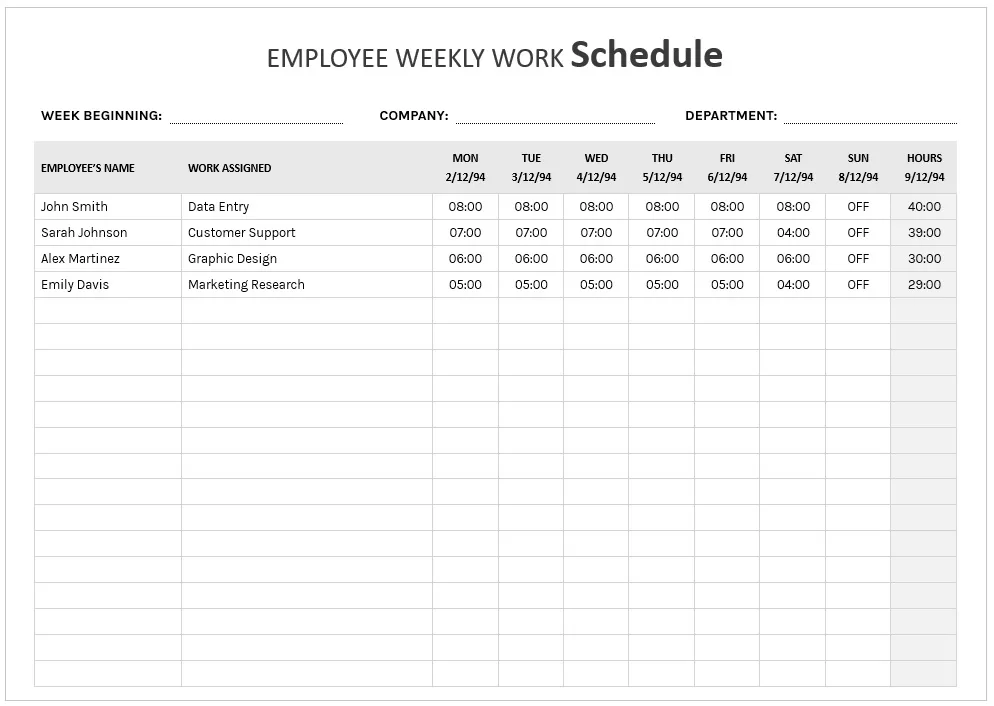
Printable Employee Weekly Work Schedule Template – Word
File Type: MS Word
File Size: 36 KB
Benefits of Using Timesheet Templates
There are lots of benefits that timesheet templates offer both employer and employee; mainly, they make it easier to track time and to have consistency in how time hours are recorded and reported. Internal time management, client billing, or payroll. And those templates will provide a structured solution, therefore eliminating guesswork and reducing the load within administrations.
Enhancing Productivity and Accountability Among Employees
A standardized timesheet template becomes more popular and helps employees pay attention to their own time and work. It is a commitment and accountability task that allows logging work hours, so an employee must consider doing things properly. While time tracking is up, a manager can discern how work is laid out for a better allocation of the resources, identification of inefficiencies, and improvements in productivity. It is a timesheet template or communication instrument between staff and supervisor clarifying expectation on the timing and performance standards of projects.
Simplifying Payroll Processing and Ensuring Compliance with Labor Laws
For employers, timesheet templates serve as a great aid in the payroll task as they provide a seamless record of clear hours worked. Such standardized data can be used directly in automated or manual payroll systems to determine wages, overtime, and deductions without time-consuming verification. Furthermore, the correct preparation of timesheets assists the organization in adhering to labor laws regarding working hours, break times, and overtime rules. Such records stand as proof of compliance in cases of audits or disputes. Timesheet templates minimize errors in payroll, all while helping in fulfilling legal requirements, thereby very much constituting a condition to maintain operational integrity and financial accuracy.
How to Choose the Right Timesheet Template?
Selecting the right timesheet template is a critical decision that can influence how effectively your organization tracks work hours, manages payroll, and monitors productivity. The template must align with the unique needs of your business, considering the nature of your workforce, the pay cycle, and the reporting structure in place. A poorly chosen template can lead to confusion, errors, and inefficiencies, while the right one can streamline operations and ensure consistent, accurate time tracking.
Assessing Your Organization’s Time Tracking Requirements and Pay Periods
First of all, one needs to analyze how the organization functions and what the very requirements of a time-tracking tool are before selecting a timesheet template. If employees have different shifts or work hourly schedules, daily or weekly templates may suffice for the required detail. For salaried employees or those who have some ongoing projects, bi-weekly or monthly would better meet their need. Important considerations would include the frequency of payroll processing, how flexible the work schedule is, and whether or not you need to track hours by task, client, or project.
Considering the Preferred Format and Compatibility with Existing Systems
Another important consideration is whether your team prefers digital templates or printable ones. Digital templates (Excel/Google Sheets) allow for automated calculations and cloud access, while printed templates may work better in an environment without constant access to devices. Furthermore, you want to ensure that the template you choose easily integrates with your current payroll software or time-tracking tools. Templates that allow customization of fields, branding, and approval workflows would be even more flexible. By strategically matching the timesheet format and structure to your internal processes, you can assure the smoother adoption of the timesheet and long-term effectiveness.
Free Printable Timesheets in PDF Format
Here are several Printable or Online Fillable PDF Timesheets to help you quickly setup your own timesheet system.
Customizing Timesheet Templates for Your Business
Indeed, a pre-designed timesheet template is a good starting point. However, customizing it according to the specific needs of your business can go a long way toward improving its applicability. Every organization has differing operational workflows, time-keeping policies, and reporting needs. By adjusting the form and substance of timesheet templates, businesses can employ tools that will be in sync with their own internal processing of payroll and performance data related to how their teams really work.
Incorporating Company Branding
One of the first steps of the customization of any timesheet template is the addition of the company logo and color scheme with branded formatting. This renders a professional look but allows that document to be recognized instantaneously within various teams. Apart from branding, the timesheet should house the fields that capture most significant information for your company. For example, you may wish to add fields for client codes, job codes, billing rates, or departments. Adding places for supervisors’ approval or comments can enhance record exploitation and keep track of accountability.
Adjusting Layouts to Accommodate Different Roles, Projects, or Client Billing Needs
Customization of the timesheet template layout is also warranted when applying various roles within your organization. Whereas hourly employees may want a detailed breakdown of time, project-based workers may ask for a column for task descriptions and client names. Templates, for instance, can be adapted for fixed-rate billing versus hourly billing. A timesheet becomes a better fit for payroll, project management, and compliance when these considerations are handled in good spirit.
Best Practices for Implementing Timesheet Systems
Introducing a timesheet system is not merely about the specification of a form or template; it must further require clarity regarding expectations, the right tools, and a culture of responsibility. Appropriately executed, timesheet systems simplify processing payroll, offer better tracking of productivity, and generate compliance to policies. Best practice adoption goes a long way to ensure that the system operates effectively while gaining acceptance throughout the organization.
Establishing Clear Policies and Guidelines for Time Tracking and Submission
Setting the policies for time tracking is the very first step for organizations to maintain uniformity and accuracy. Employees must know when timesheets are to be raised, how frequent submission of timesheets is, what information needs to be included and which hours are considered billable or non-billable. Setting these guidelines helps to remove confusion and put into place a standard everyone can follow. Training should also be incorporated into this process when employees have been hired into the company; or when the new setup is being built or new changes are being made. To reinforce these policies and to clarify any doubts that might arise from the employee’s side, regular reminders and updates for the process are necessary to keep it forefront in the employees’ minds and not to be seen as an afterthought.
Utilizing Digital Tools for Automated Calculations and Reducing Manual Errors
Automated features in some digital timesheet applications or spreadsheet templates can minimize the possibilities of human error. These tools calculate totals, specify the amounts of regular and overtime hours, and confirm the data with fewer steps. Automation would improve accuracy speed up payroll processing and data analysis, enabling remote or hybrid teams. Real-time access and submissions provide higher flexibility and coordination.
It is efficiency, scalability, and simplicity in manageability because timesheet systems between structured policies and technology are easy, so the employee spends much time at work before administration while also allowing managers to see more productivity and cost by labor. Time tracking-and-use shall comply naturally by everyone knowing what it is for and how it affects the organization rather than being just another component of business infrastructure.
Keep in touch for future updates on this topic to grab more free templates.
